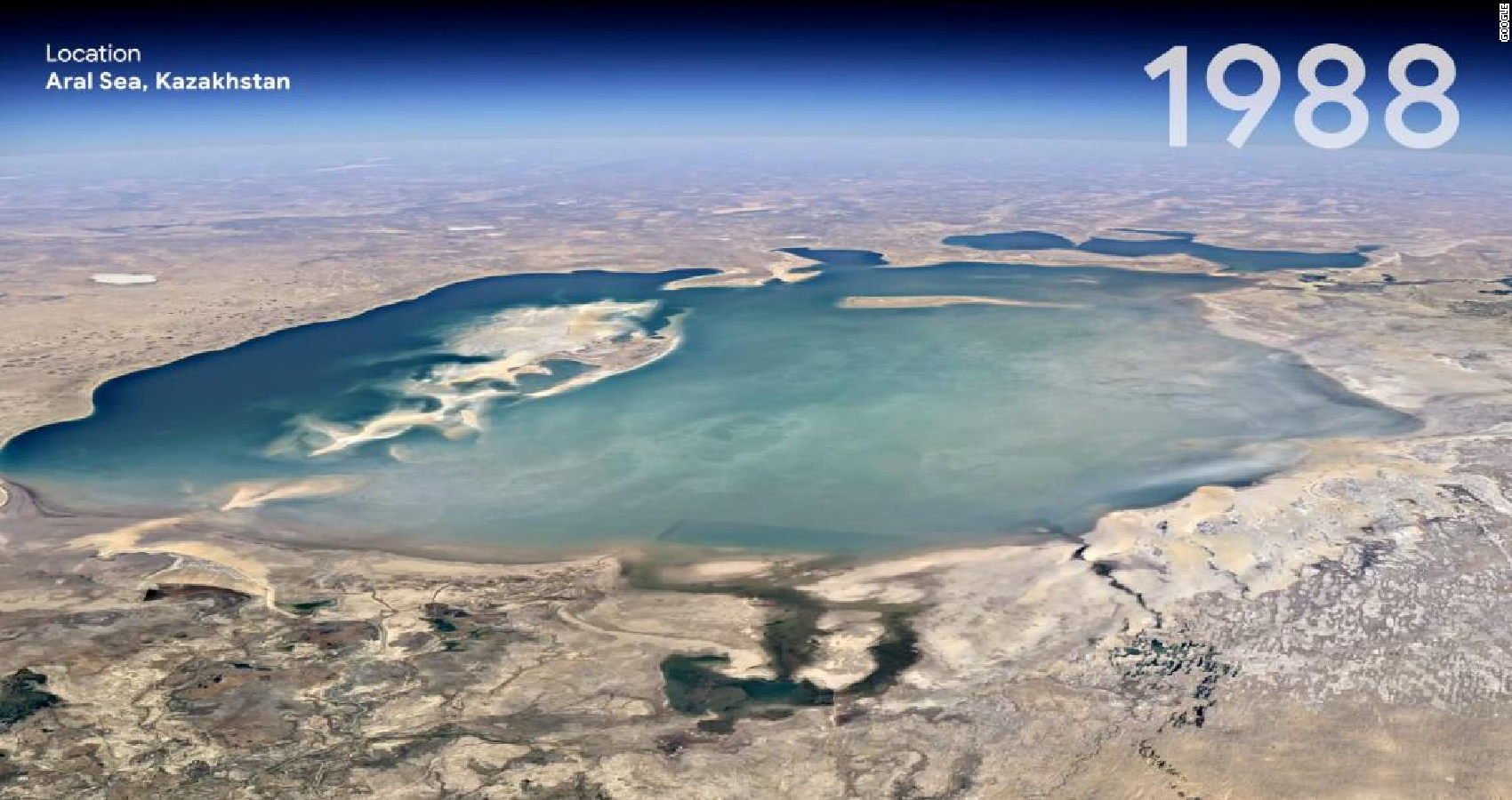Newswise — In the popular imagination, New York City is a mass of soaring steel-frame skyscrapers. But many of the city’s 1 million buildings are not that modern. Behind their brick-and-mortar facades, its numerous 19th- and early 20th-century warehouses, commercial buildings and row homes are framed with massive wooden joists and beams. These structures probably harbor at least 14 million cubic meters of timber, the volume equivalent of about 74,000 subway cars. Their main sources: old-growth forests that long predated New York, and were erased to create it.
Historic preservation has never been New York’s strong point; about 1,000 old buildings are demolished or gut-renovated every year, the remains mostly going to landfills. Now, a team from the Tree Ring Laboratory at Columbia University’s Lamont-Doherty Earth Observatory is harnessing the destruction to systematically mine torn-out timbers for data. Annual growth rings from trees that were young in the 1500s may offer records of past climate no longer available from living trees. Studies of timber species, ages and provenances can shed light on the history of U.S. logging, commerce and transport.
“New York City is a huge repository of old timbers, probably the biggest in the country. It’s an amazing resource for science,” said dendrochronologist (tree-ring scientist) Mukund Palat Rao, one of the leaders of the effort (his position at Lamont is sponsored by the National Oceanic and Atmospheric Administration). “These forests don’t exist anymore—they’re inside the buildings. They’re being demolished at a rapid pace, and getting thrown away. We’re trying to collect whatever we can.”
After its settlement by the Dutch in the 1620s, New York grew steadily but slowly. Then, about 1840, great waves of immigrants began arriving. A resulting major growth spurt lasted some 80 years before tapering off. During this time, much of the now existing city was built. Before steel came in during the early 20th century, the framing material of choice was wood. Starting in the 1700s, loggers to the north cut vast swaths of white pine, spruce, hemlock and balsam fir, often floating it down the Hudson River. By the latter 1800s, three-quarters of the Northeast’s virgin forests were stripped. Many builders then looked to the vast old-growth longleaf pine ecosystems of the U.S. Southeast. When the eastern seaboard was exhausted, loggers moved on to Louisiana, Mississippi and Texas. Today, only about 3 percent of the South’s old longleaf forests remain.
In a study just published in the Journal of Archaeological Science: Reports, the researchers shed unprecedented light on this period. The study looks at joists taken from Manhattan’s gigantic 1891 Terminal Warehouse, an iconic structure that still occupies an entire block in Manhattan’s Chelsea neighborhood. Early on, it stored everything from carpets, furs and liquor to Broadway stage sets and stone sarcophagi. In the 1980s, it was converted into the country’s largest mini-storage facility. A run of railroad tracks bisecting its cavernous interior became for more than a decade the site of the infamously decadent Tunnel nightclub. The warehouse has also served as a spooky set for movies including the “Ghostbusters” series.
In 2019, new owners wanted to open up space for new shops, offices and restaurants. This involved pulling out enormous wooden joists holding up some interior sections of the building. Hoping to reuse the joists, they called Edward Cook, head of the Tree Ring Lab, to see what could be learned about them.
Cook is a hero of archaeodendrochronology, the study of wood from old buildings. Early in his career, his examinations of Philadelphia’s Independence Hall and other historic structures showed that their ages could be pinned down by studying tree rings in their framing. He has since dated about 150 old houses and other buildings across the Northeast. In 2014, he and colleagues analyzed the remains of a wooden sloop accidentally turned up during excavations at the destroyed World Trade Center site. They determined it had been built from old-growth white oak cut somewhere near Philadelphia around 1773, and served for 20 or 30 years before being dumped on the mucky shoreline of New York harbor.
The tree-ring lab crew went down to the Terminal Warehouse’s massive basement. Here, they found piles of removed joists, 22 feet long, a foot wide and 3 inches deep. Looking at the ends in cross section, they could see that many displayed 150 or more annual growth rings—a dendrochronologist’s delight. (Caroline Leland, the study’s lead author with Rao, also noted several humongous bird-cage-like things—tools of the trade once used by go-go dancers at the Tunnel, she guessed.) Amid combustion fumes and deafening racket, a building worker chain sawed off the ends of a couple of dozen of the best-looking joists, and the scientists took them back to the lab.
Based on resin content and certain patterns and colors in the timbers’ rings, the team determined that the joists were perfect specimens of old-growth longleaf pine, prized by 19th-century builders for their density, strength and resistance to rot.
Trees’ growth rings vary each year according to weather; in the simplest translation, wider rings mean wetter years with good growing conditions. After that, it gets more complicated; by measuring and comparing rings in excruciating detail, dendrochronologists can create a year-by-year fingerprint that most or all of the trees from the same place have in common. The joists came from different parts of different trees, so no two represented the exact same time span. But many overlapped in time. This allowed the scientists to assemble a master chronology, from the date the oldest trees started growing to the date they were cut.
Based on the characteristics of some of the joists’ outer rings, the scientists determined that most of the trees had been felled in 1891or a bit earlier. And, all the trees were ancient; most started out as saplings anywhere from the early 1600s to the mid-1700s. The oldest had sprouted around 1512.
They then compared their data to previous studies of rings in rare living longleaf stands, ranging from Louisiana to North Carolina. Because yearly conditions vary from site to site, each site exhibits localized ring patterns. By comparing these, they were then able to deduce where the timbers had come from: The rings from the joists lined up nicely with those of living trees from eastern Alabama’s Choccolocco Mountain and Spreewell Bluff, just across the border in western Georgia. Both areas had been heavily logged in the late 1800s, when steam power and rail networks were expanding mightily, allowing lumber to be shipped to ravenous faraway markets like New York.
Delving into regional historical archives, the team hypothesized that the trees were sawed at the Sample Lumber Company, near Hollins, Alabama. Then, in one of a couple of possible scenarios, they would have been shipped by a series of connecting railroads to the port of Savannah, Ga. There, the 250-pound joists would have been loaded into openings in the hulls of schooners bound for the banks of the Hudson, where the Terminal Warehouse was rising.
“To think of all those old trees, just clear cut—that was really sad,” said Leland. On the other hand: “There is a lot of history locked up in those timbers. It’s really difficult to find living old growth in the eastern United States now. If we can get enough samples, it may allow us to develop a better understanding of the long-term climate in the regions these trees come from.”
The scientists now wanted more old timbers. Luckily, they had a connection with Alan Solomon, a New York entrepreneur and polymath. Solomon comes from a family of scrap-metal dealers, so he knows salvage. He is also an intensely driven historical researcher and preservationist. Among other pursuits, he fought for seven years in the late 1990s and early 2000s to stop the demolition of 211 Pearl Street, a circa 1831 commercial building in lower Manhattan commissioned by soapmaker William Colgate. (Yes, that Colgate, progenitor of the Colgate-Palmolive mega-corporation.) Solomon had heard that New York writer Herman Melville might have written his famous 1853 short story “Bartleby the Scrivener” at 211 Pearl. This may or may not have been true. In the end, the building was destroyed and replaced by a skyscraper. A salvager carted away some of the timbers and sold them for reuse in other buildings, including a hotel in New Hampshire.
By 2019, Solomon was running his own Brooklyn-based timber-salvage company, Sawkill Lumber. (Named after a creek that once ran from the present-day site of the American Museum of Natural History to the East River. It powered an early 1600s Dutch sawmill that probably helped devour the old-growth forest of Manhattan itself.) Solomon also authored a book about reclaimed wood, for which he consulted Ed Cook. After that, Solomon ended up helping with historical research for the Terminal Warehouse project. With his finger on the pulse of New York demolitions, he was more than happy to have the dendrochronologists tag along with him to active sites and saw out samples as walls were being taken down and workers piled up debris.
Among other places, they showed up with their own chainsaws and hardhats to the remodeling of an 1898 firehouse on Manhattan’s Lafayette Street; a couple of doomed horse stables in Brooklyn; the 19th-century St. Mary’s Church in Brooklyn’s Clinton Hill neighborhood, which was coming down for a modern development; and various warehouses, homes and mixed-use building scattered around the city. So far, they have material from 18 buildings, and plan to collect more.
The one other site they have analyzed so far is 211 Pearl; Solomon had hung on to some of the remains. They identified the framing as white pine. They then compared the timbers to studies of rare living white pines from Pennsylvania, upstate New York and Quebec, and found the best match in New York’s Adirondack Mountains. Here, they learned, the pines had once grown as much as four feet in diameter and 160 feet tall. Logging had started in the 1750s and peaked in the 1870s, with much of the wood being sawed in the upstate town of Glens Falls, and sent down to New York.
The living-tree studies to which the researchers compared the Pearl Street timbers extended back to 1690—quite a respectable stretch. But some of the Pearl Street timbers were even older: 1532. If more such specimens can be found, said Rao, this should allow the scientists to extend the climate record for this region considerably. Interestingly, the trees appear to have been cut in 1789, four decades before 211 Pearl went up. Were they stockpiled? Or, perhaps recycled from an even earlier building?
The dendrochronologists have now joined with Solomon to try founding a nonprofit aimed at promoting the preservation of old timbers in New York. They are also talking with a small group of engineers and architects who want to lobby the city for an ordinance that would identify old timbers uncovered in demolitions, and require companies to contact salvagers.
“I’d like to see information from a big network of buildings,” said Leland. “We could develop a sort of history of the urban forest.”
Lamont-Doherty Earth Observatory is Columbia University’s home for Earth science research. Its scientists develop fundamental knowledge about the origin, evolution and future of the natural world, from the planet’s deepest interior to the outer reaches of its atmosphere, on every continent and in every ocean, providing a rational basis for the difficult choices facing humanity. www.ldeo.columbia.edu | @LamontEarthThe
The Earth Institute, Columbia University mobilizes the sciences, education and public policy to achieve a sustainable earth. www.earth.columbia.edu.
 The new legislation is expected to help the EU achieve its target of cutting emissions from cars and light commercial vehicles by 100% by 2035 — when measured against the emissions in 2021. In fact, by 2030, while emissions from cars have to be reduced by 55%, those from vans need to be cut by 50%. According to the EC, cars and vans account for 12% and 2.5% of EU’s total carbon dioxide (CO2) emissions, respectively.
The new legislation is expected to help the EU achieve its target of cutting emissions from cars and light commercial vehicles by 100% by 2035 — when measured against the emissions in 2021. In fact, by 2030, while emissions from cars have to be reduced by 55%, those from vans need to be cut by 50%. According to the EC, cars and vans account for 12% and 2.5% of EU’s total carbon dioxide (CO2) emissions, respectively.

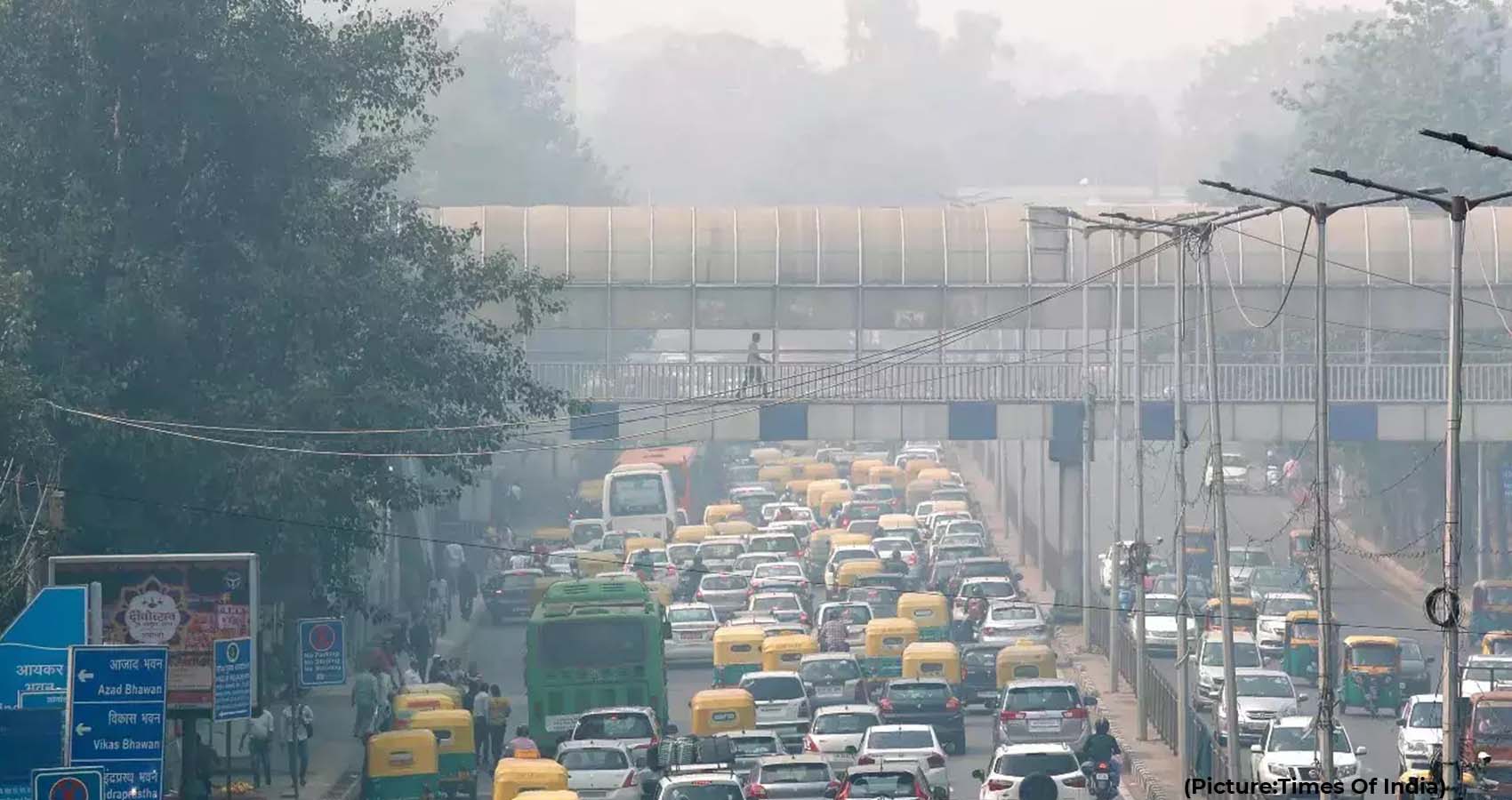
 India ranked at the bottom with a total score of 18.9, while Denmark was the top scorer as the world’s most sustainable country. “…For the overall performance and ranking EPI, each country’s performance is viewed across numerous (18) categories like ecosystem vitality, biodiversity and habitat, ecosystem services and grassland loss. Unfortunately, India is consistently ranking either at the bottom or close to the bottom in almost all the categories, both regionally and globally,” as per a statement by EPI.
India ranked at the bottom with a total score of 18.9, while Denmark was the top scorer as the world’s most sustainable country. “…For the overall performance and ranking EPI, each country’s performance is viewed across numerous (18) categories like ecosystem vitality, biodiversity and habitat, ecosystem services and grassland loss. Unfortunately, India is consistently ranking either at the bottom or close to the bottom in almost all the categories, both regionally and globally,” as per a statement by EPI.

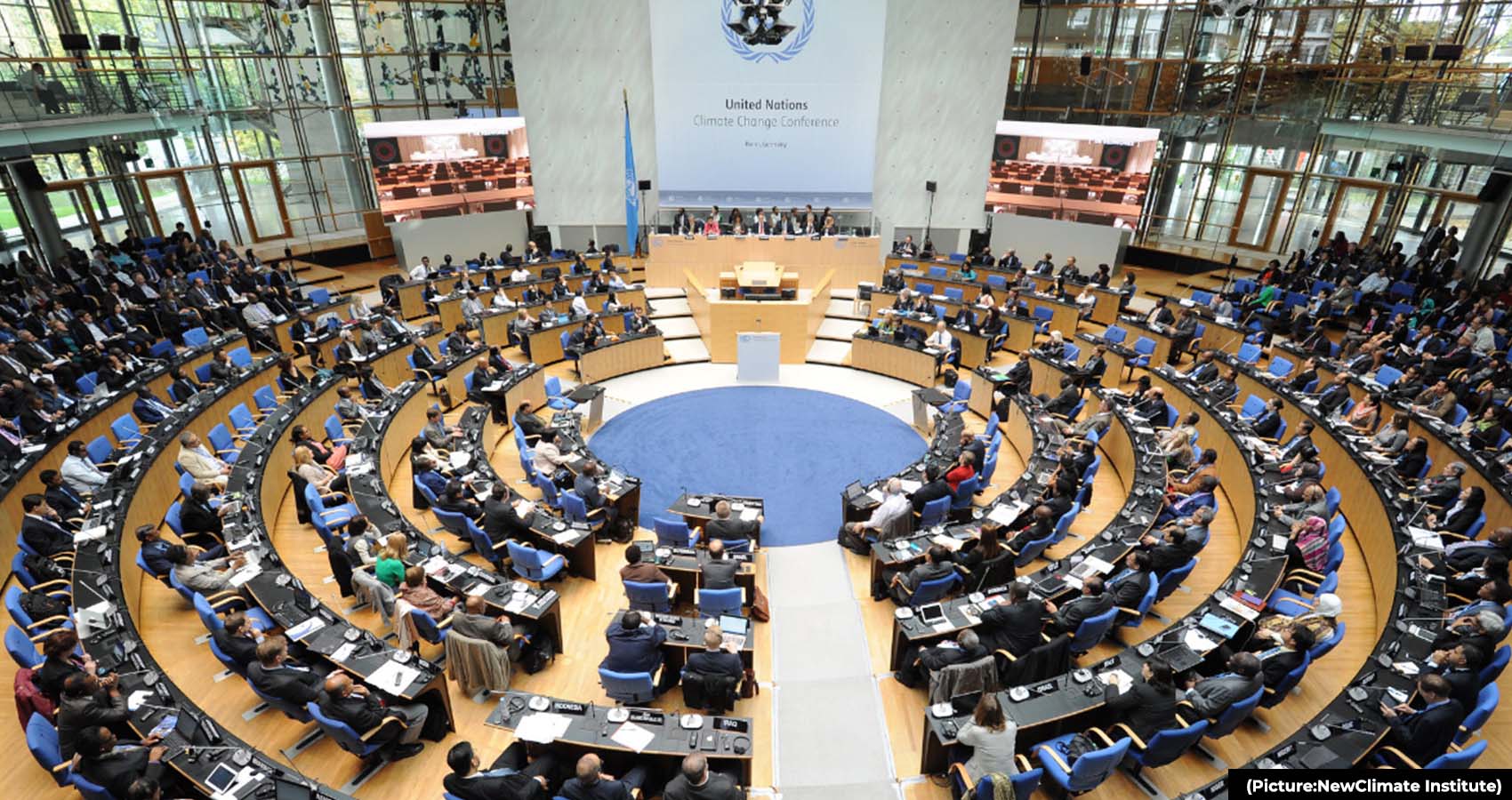
 The UN’s top climate change official warned that climate change is progressing exponentially. With the world currently on track to more than double the 1.5 Celsius goal of the Paris Agreement by the end of the century, ambition must urgently be raised to avoid the worst impacts of climate change, and immediate action and progress in Bonn are needed.
The UN’s top climate change official warned that climate change is progressing exponentially. With the world currently on track to more than double the 1.5 Celsius goal of the Paris Agreement by the end of the century, ambition must urgently be raised to avoid the worst impacts of climate change, and immediate action and progress in Bonn are needed.
 ITC Classmate’s small but significant afforestation drive involving school students aims to complement the efforts of volunteers combating climate change at a local level. It has partnered with the Environmentalist Foundation of India, who have been invited by the Chengalpet district administration to create a forest patch at Vengadamangalam which is a fast-growing residential suburban pocket of Chennai and is witnessing contamination of land, water, and air with a profound shift in land use, growth, and ecology at large.
ITC Classmate’s small but significant afforestation drive involving school students aims to complement the efforts of volunteers combating climate change at a local level. It has partnered with the Environmentalist Foundation of India, who have been invited by the Chengalpet district administration to create a forest patch at Vengadamangalam which is a fast-growing residential suburban pocket of Chennai and is witnessing contamination of land, water, and air with a profound shift in land use, growth, and ecology at large.
 Einstein’s theory works well in explaining the way matter behaves on a large scale but clashes with the way quantum physics describes the gravity among the smallest observable particles. For years, Gionti has attempted to reconcile the two.
Einstein’s theory works well in explaining the way matter behaves on a large scale but clashes with the way quantum physics describes the gravity among the smallest observable particles. For years, Gionti has attempted to reconcile the two.
 The move comes after the president in April invoked the Defense Production Act to
The move comes after the president in April invoked the Defense Production Act to 
 “We discovered this phenomenon by examining the similarity in ocean surface temperature from one year to the next as a simple metric for ocean memory,” said Hui Shi, lead author and researcher at the Farallon Institute in Petaluma, California. “It’s almost as if the ocean is developing amnesia.”
“We discovered this phenomenon by examining the similarity in ocean surface temperature from one year to the next as a simple metric for ocean memory,” said Hui Shi, lead author and researcher at the Farallon Institute in Petaluma, California. “It’s almost as if the ocean is developing amnesia.”
 Central to bitcoin’s technology is the process through which transactions are verified and then recorded on what’s known as the blockchain. Computers connected to the bitcoin network race to solve complex mathematical calculations that verify the transactions, with the winner earning newly minted bitcoins as a reward. Currently, when a machine solves the puzzle, its owner is rewarded with 6.25 bitcoins — worth about $260,000 total. The system is calibrated to release 6.25 bitcoins every 10 minutes.
Central to bitcoin’s technology is the process through which transactions are verified and then recorded on what’s known as the blockchain. Computers connected to the bitcoin network race to solve complex mathematical calculations that verify the transactions, with the winner earning newly minted bitcoins as a reward. Currently, when a machine solves the puzzle, its owner is rewarded with 6.25 bitcoins — worth about $260,000 total. The system is calibrated to release 6.25 bitcoins every 10 minutes.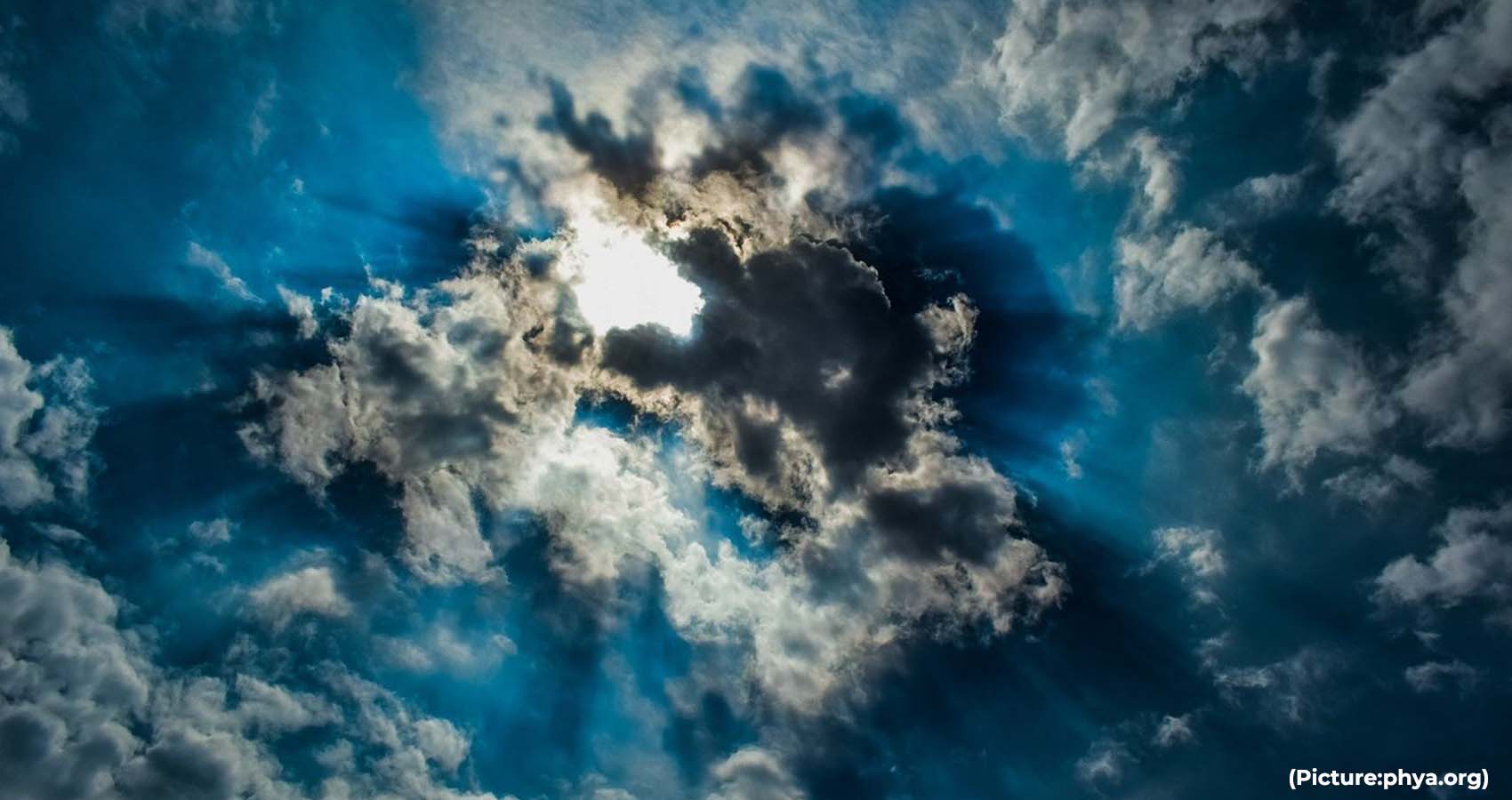
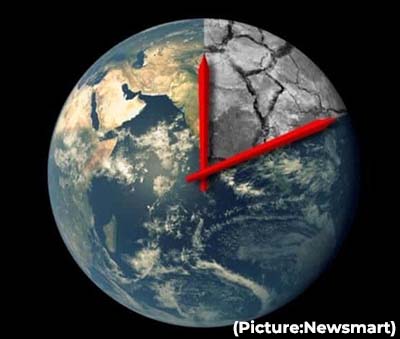 “It’s really, really, really hard to walk people back from that ledge,” Gill said. Doomism “is definitely a thing,” said Wooster College psychology professor Susan Clayton, who studies climate change anxiety and spoke at a conference in Norway last week that addressed the issue. “It’s a way of saying ‘I don’t have to go to the effort of making changes because there’s nothing I can do anyway.’”
“It’s really, really, really hard to walk people back from that ledge,” Gill said. Doomism “is definitely a thing,” said Wooster College psychology professor Susan Clayton, who studies climate change anxiety and spoke at a conference in Norway last week that addressed the issue. “It’s a way of saying ‘I don’t have to go to the effort of making changes because there’s nothing I can do anyway.’”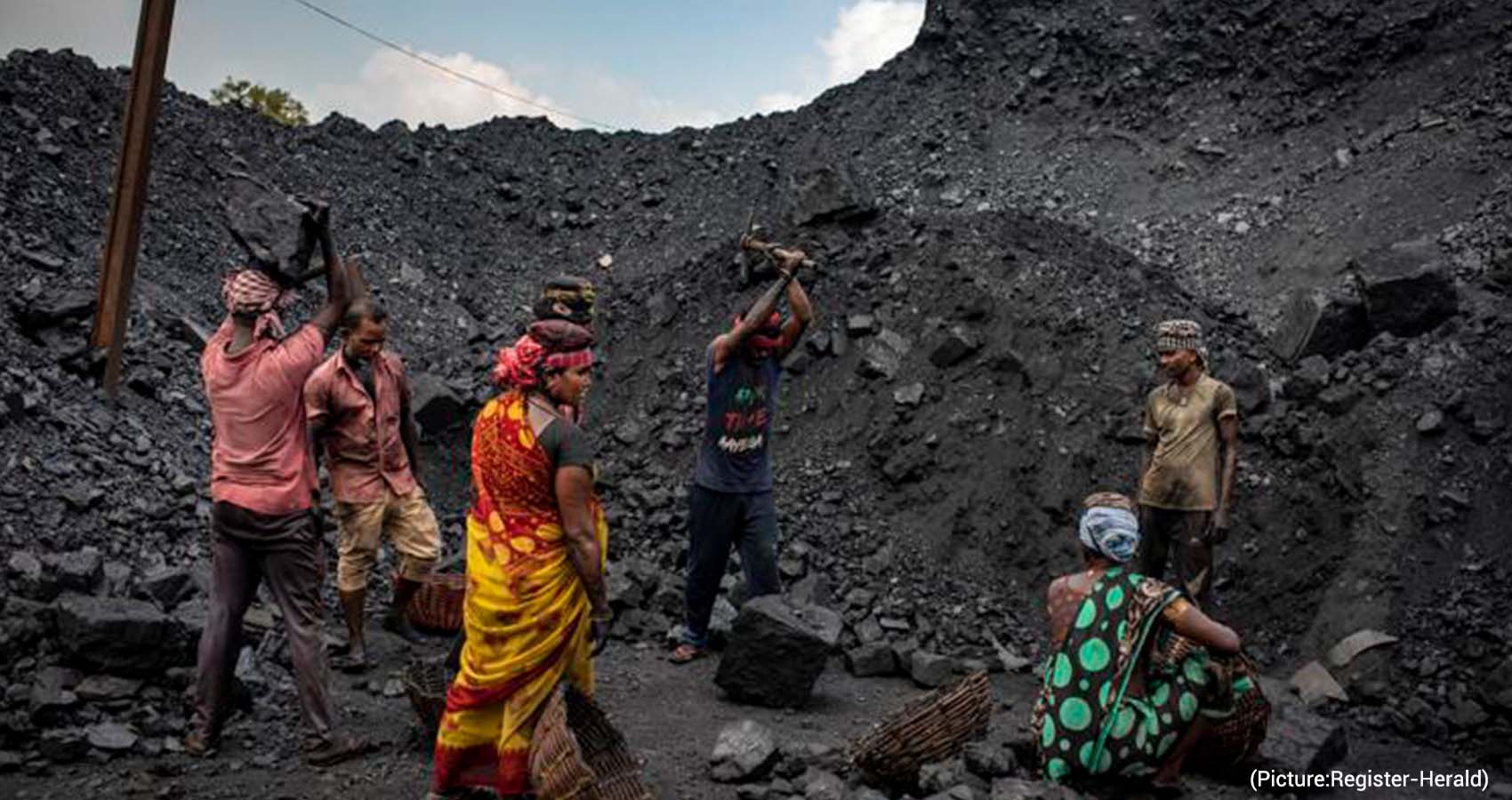
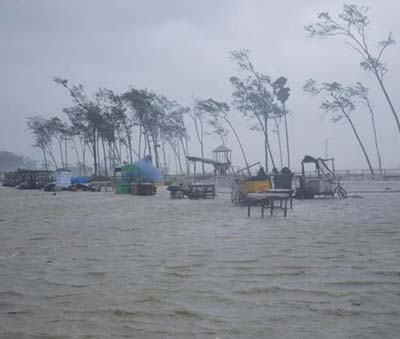 The typical American, for instance, uses 16 times more electricity than the average Indian, according to data from the World Bank.
The typical American, for instance, uses 16 times more electricity than the average Indian, according to data from the World Bank.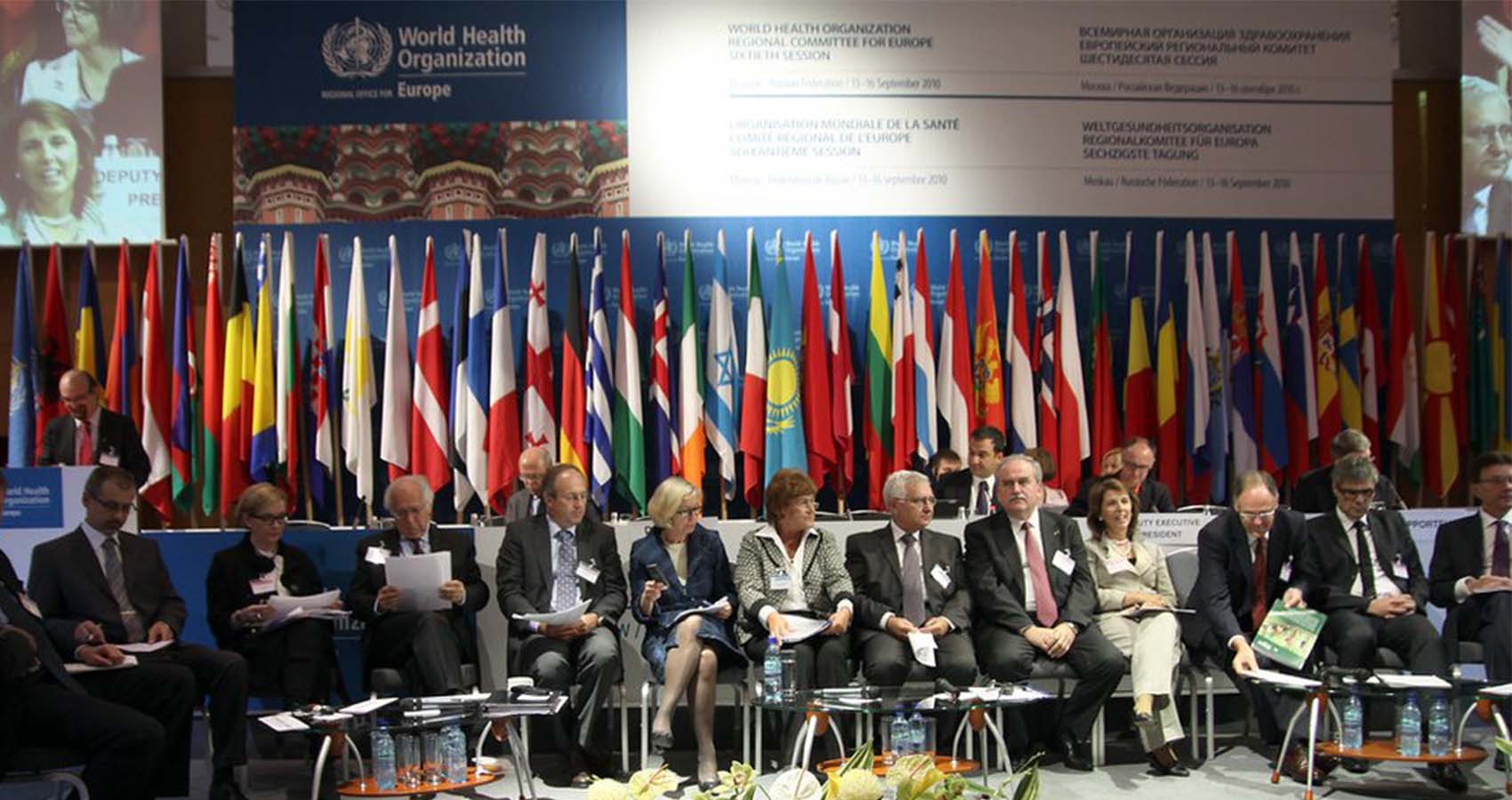
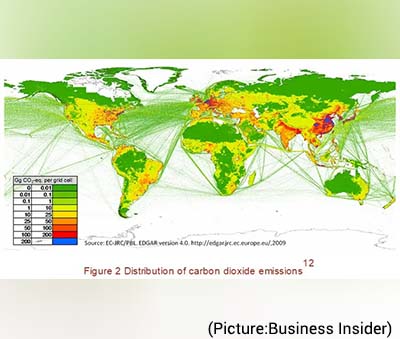 Commending the ambitious goals of 500 GW renewables by 2030 set by Prime Minister Narendra Modi at Glasgow (where the annual climate change summit was held in November 2021), Kerry said: “The criticality of achieving that goal was very simple. It is the only way that India itself becomes compliant with the 1.5 degrees goal, which we all ratified in Glasgow recently.”
Commending the ambitious goals of 500 GW renewables by 2030 set by Prime Minister Narendra Modi at Glasgow (where the annual climate change summit was held in November 2021), Kerry said: “The criticality of achieving that goal was very simple. It is the only way that India itself becomes compliant with the 1.5 degrees goal, which we all ratified in Glasgow recently.”
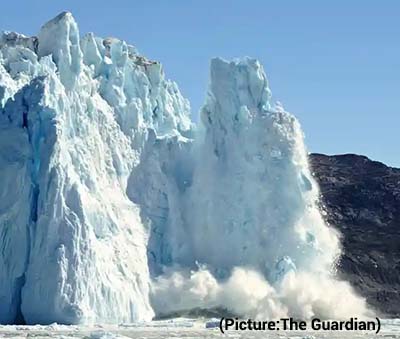 “The sublimation is like the drip from a leaking dam and the rapid ice loss is what happens when the dam breaks,” explained Mariusz Potocki, a glaciochemist and doctoral candidate in the Climate Change Institute, University of Maine, who collected the highest ice core.
“The sublimation is like the drip from a leaking dam and the rapid ice loss is what happens when the dam breaks,” explained Mariusz Potocki, a glaciochemist and doctoral candidate in the Climate Change Institute, University of Maine, who collected the highest ice core.

 Brijendra Singh, a 77-year-old tour guide, has shown visitors around the famed Khajuraho group of Hindu and Jain temples for 52 years.
Brijendra Singh, a 77-year-old tour guide, has shown visitors around the famed Khajuraho group of Hindu and Jain temples for 52 years.
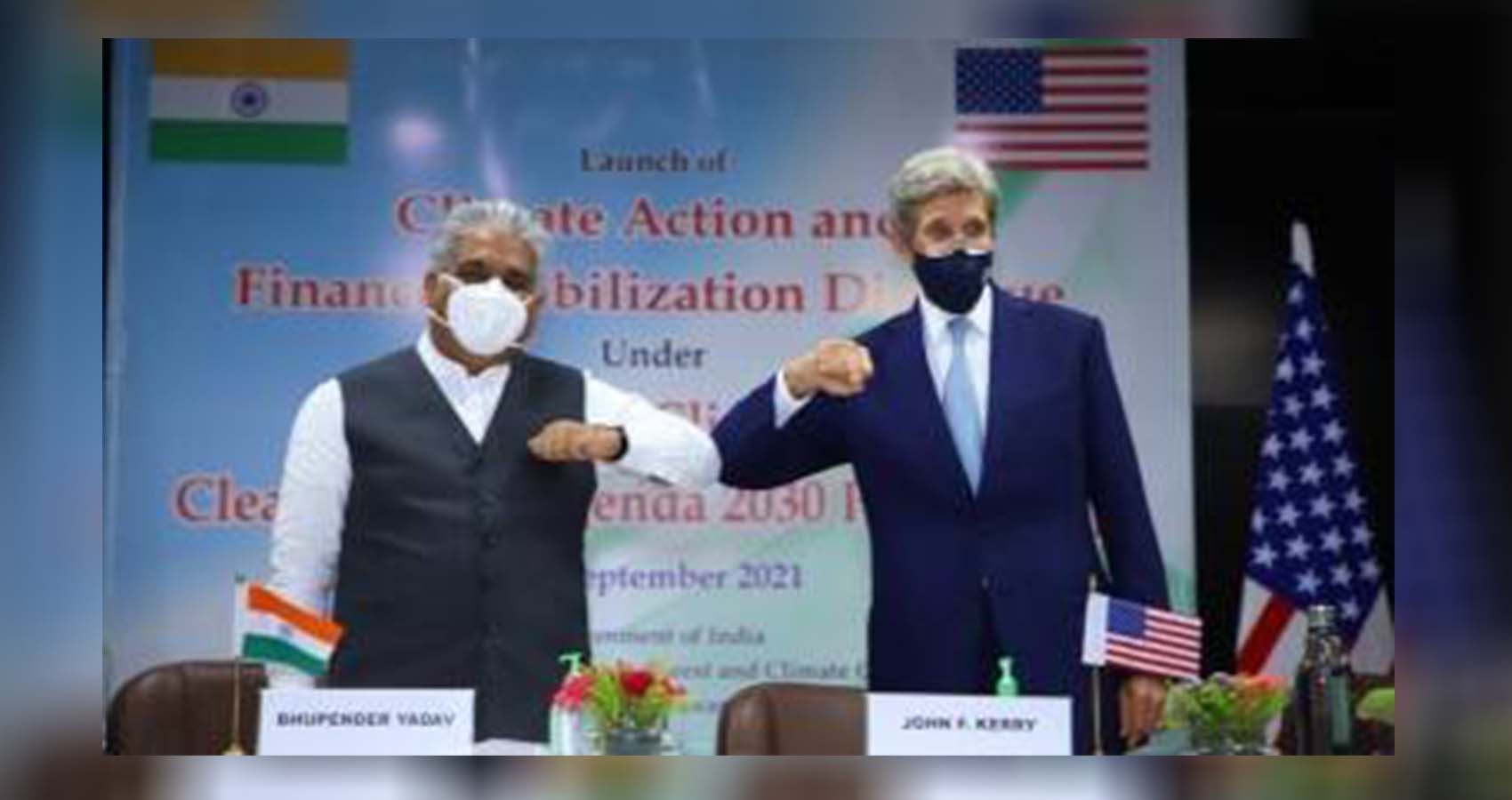
 Both the leaders discussed taking forward the India US Climate Action and Finance Mobilisation Dialogue (CAFMD) through the four identified pillars, Climate Ambition, Finance Mobilisation, Adaptation and Resilience, and Forestry, a statement from the Environment, Forests and Climate Change Ministry said.
Both the leaders discussed taking forward the India US Climate Action and Finance Mobilisation Dialogue (CAFMD) through the four identified pillars, Climate Ambition, Finance Mobilisation, Adaptation and Resilience, and Forestry, a statement from the Environment, Forests and Climate Change Ministry said.
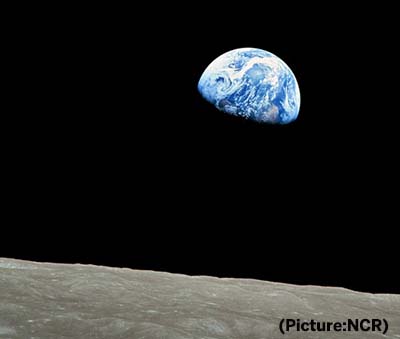 We have learned that our Milky Way is one of 2 trillion known galaxies in the universe. Our galaxy alone has 200 billion stars and most of these stars appear to have planets. The probability of intelligent life somewhere in our galaxy or in another galaxy is high, given these numbers.
We have learned that our Milky Way is one of 2 trillion known galaxies in the universe. Our galaxy alone has 200 billion stars and most of these stars appear to have planets. The probability of intelligent life somewhere in our galaxy or in another galaxy is high, given these numbers.
 And this is why, I give back to the Himalayas by keeping them litter free and reintroducing a circular economy at the third pole of the world. A circular economy is possible only if we factor in the carrying capacity of our mountains, an aspect we often overlook. The never ending demands of tourists and dying belongingness of indigenous communities is adding fuel to the fire. I believe that local growth comes from locally sourced produce and local skills. Small is beautiful and sustainable – just think of homestays over luxury hotels for example!
And this is why, I give back to the Himalayas by keeping them litter free and reintroducing a circular economy at the third pole of the world. A circular economy is possible only if we factor in the carrying capacity of our mountains, an aspect we often overlook. The never ending demands of tourists and dying belongingness of indigenous communities is adding fuel to the fire. I believe that local growth comes from locally sourced produce and local skills. Small is beautiful and sustainable – just think of homestays over luxury hotels for example!
 This was the second time in weeks that India went against the tide to block a climate change-related proposal that it did not agree with. At the annual climate change conference in Glasgow last month, India had forced a last-minute amendment in the final draft agreement to ensure that a provision calling for “phase-out” of coal was changed to “phase-down”.
This was the second time in weeks that India went against the tide to block a climate change-related proposal that it did not agree with. At the annual climate change conference in Glasgow last month, India had forced a last-minute amendment in the final draft agreement to ensure that a provision calling for “phase-out” of coal was changed to “phase-down”.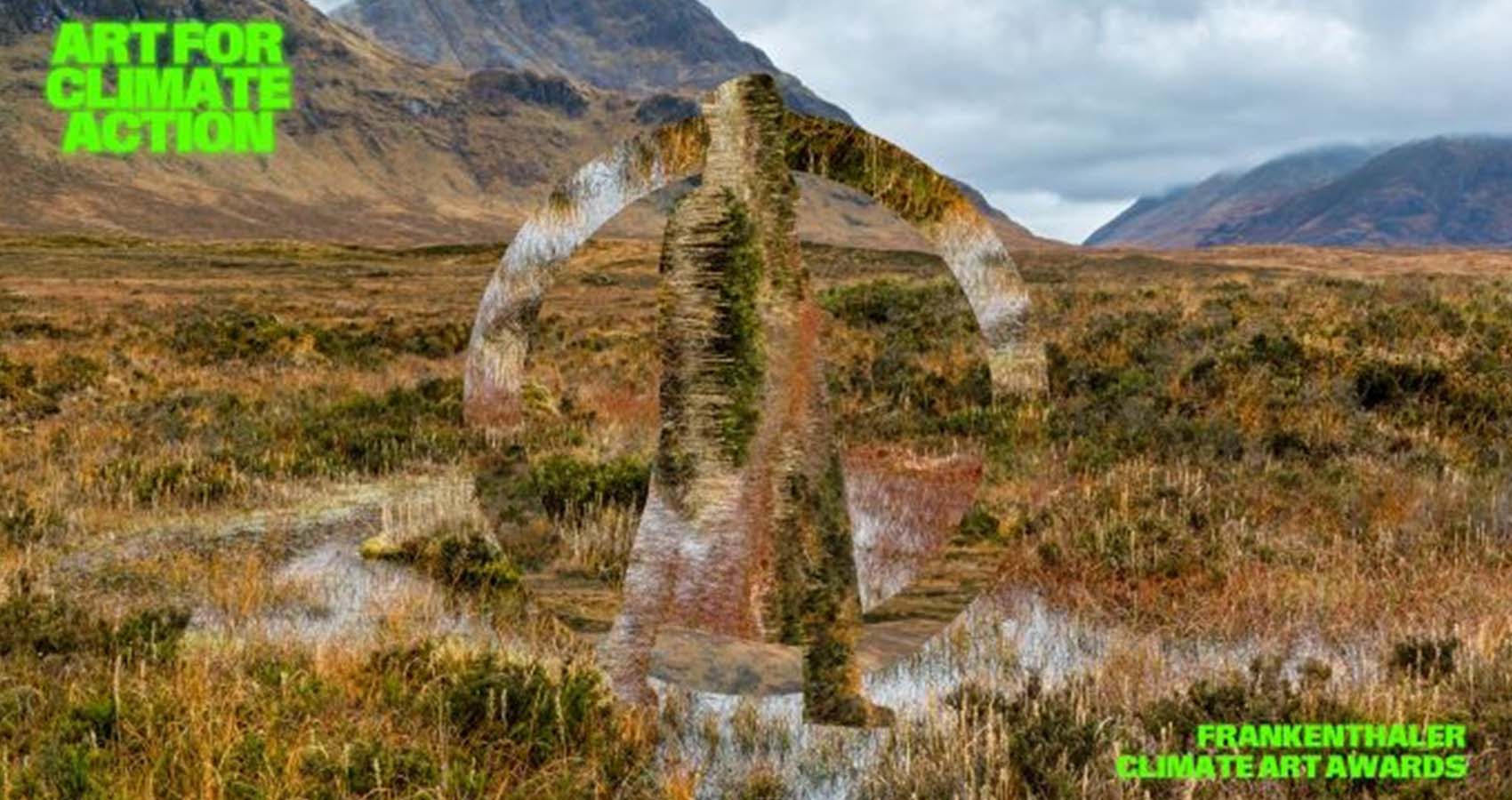

 The new endeavour will base itself a short distance away from the original at Little Dome C, an area located roughly 40km from the Italian-French Concordia Station, on the east Antarctic plateau
The new endeavour will base itself a short distance away from the original at Little Dome C, an area located roughly 40km from the Italian-French Concordia Station, on the east Antarctic plateau
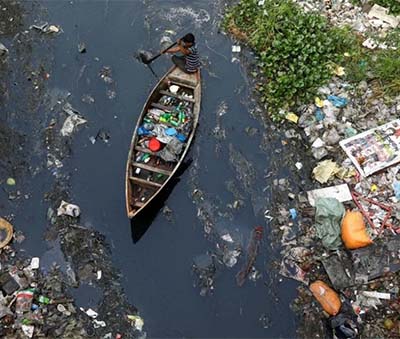 “In India although about 60% of plastic is recycled, we are still seeing the damage that plastic pollution is causing,” Nadia Rasheed, Deputy Resident Representative, UNDP India, said in an interview at the Reuters Next conference broadcast on Friday.
“In India although about 60% of plastic is recycled, we are still seeing the damage that plastic pollution is causing,” Nadia Rasheed, Deputy Resident Representative, UNDP India, said in an interview at the Reuters Next conference broadcast on Friday.
 While those are noteworthy figures, there are other EVs that can match these figures in that price range (around $65,000 for the higher end Ocean). The real twist here is the base Ocean, called the Ocean Sport, that will use a smaller range battery (targeting around 250 miles of range), and a single-motor front wheel drive, that will start — before any state and local incentives —
While those are noteworthy figures, there are other EVs that can match these figures in that price range (around $65,000 for the higher end Ocean). The real twist here is the base Ocean, called the Ocean Sport, that will use a smaller range battery (targeting around 250 miles of range), and a single-motor front wheel drive, that will start — before any state and local incentives — 
 None of this means that Kamo’oalewa has to have especially exotic origins. The solar system is littered with asteroids, some of which are captured by the gravity of other planets and become more conventional—if fragmentary—moons. Others don’t orbit other planets in the common way but fall into line in front of them or behind them and pace them in their orbits around the sun, like the flocks of so-called Trojan asteroids that precede and trail Jupiter.
None of this means that Kamo’oalewa has to have especially exotic origins. The solar system is littered with asteroids, some of which are captured by the gravity of other planets and become more conventional—if fragmentary—moons. Others don’t orbit other planets in the common way but fall into line in front of them or behind them and pace them in their orbits around the sun, like the flocks of so-called Trojan asteroids that precede and trail Jupiter.
 Yet, despite these efforts, the fact is that we started out late in combating climate change and now need to accelerate corrective action if humans are not to go the way of the dinosaurs. The climate crisis is a global issue and requires action from all countries, but many developing economies, including some of the most climate-vulnerable ones, lack the financial wherewithal to do enough on their own. Some emerging economies, including South Africa and much of South and Southeast Asia, are hugely reliant on coal, and will have to undergo a disruptive green transition.
Yet, despite these efforts, the fact is that we started out late in combating climate change and now need to accelerate corrective action if humans are not to go the way of the dinosaurs. The climate crisis is a global issue and requires action from all countries, but many developing economies, including some of the most climate-vulnerable ones, lack the financial wherewithal to do enough on their own. Some emerging economies, including South Africa and much of South and Southeast Asia, are hugely reliant on coal, and will have to undergo a disruptive green transition.

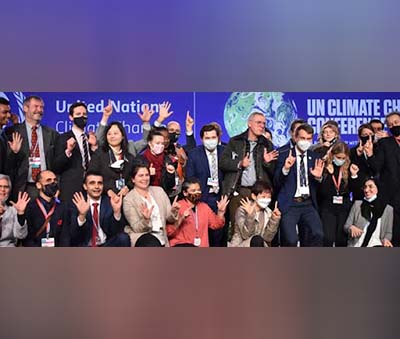 He even warned “It is time to go into emergency mode — or our chance of reaching net zero will itself be zero.” At the same time, Secretary-General’s rather confusing, ill-composed comment in his remarks at the conclusion of COP 26 that “We are still knocking on the door of climate catastrophe” left many wondering what he was trying to convey.
He even warned “It is time to go into emergency mode — or our chance of reaching net zero will itself be zero.” At the same time, Secretary-General’s rather confusing, ill-composed comment in his remarks at the conclusion of COP 26 that “We are still knocking on the door of climate catastrophe” left many wondering what he was trying to convey.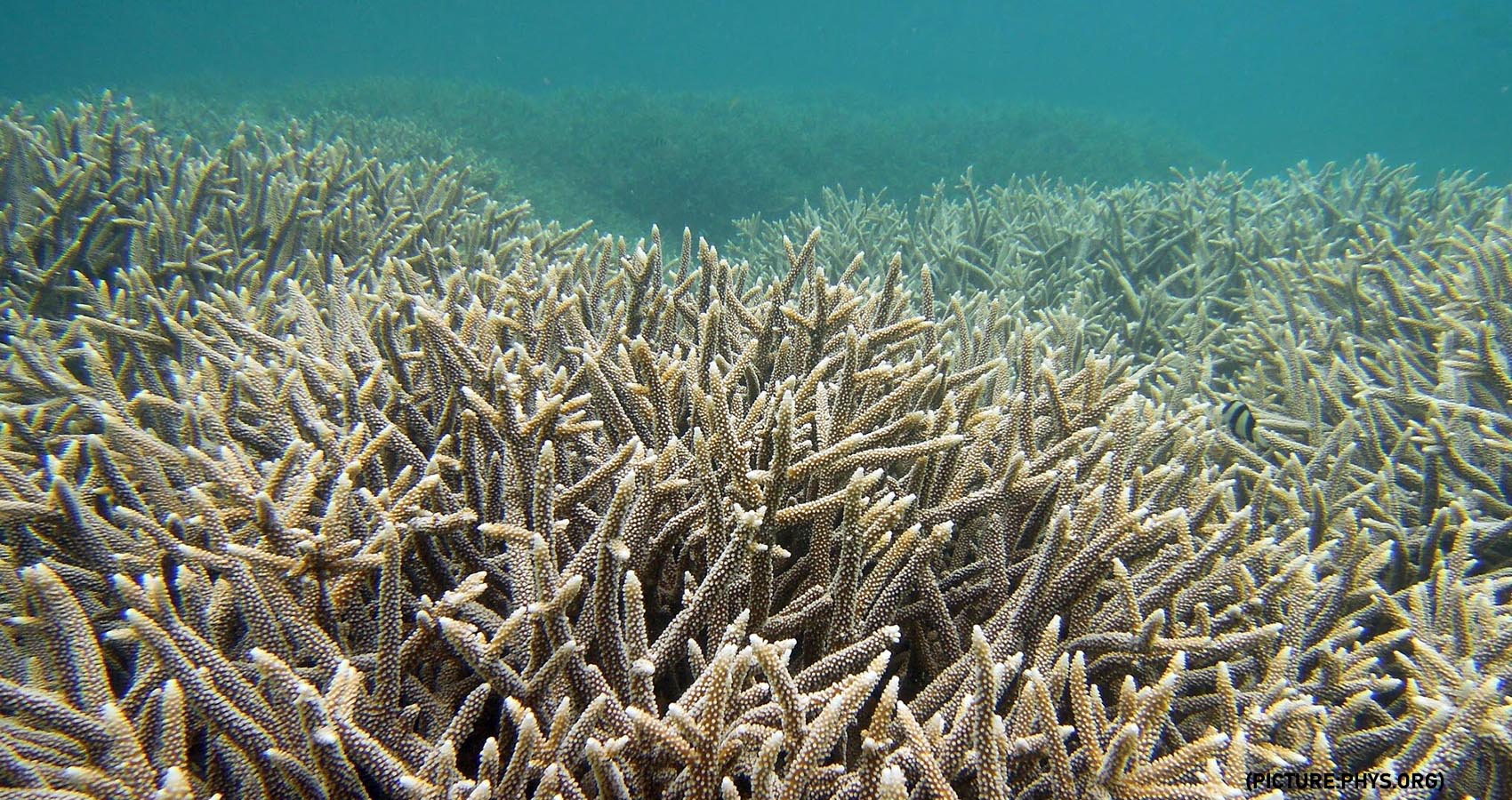
 “What we’re looking at here is the potential extinction of a whole environment,” said Watson, who specializes in marine social-ecological systems and understanding complex adaptive systems. “In some places, the environments we have today are not going to exist in the future. We won’t be able to go visit them or experience them. It is an environmental, cultural and economic loss we can’t replace.”
“What we’re looking at here is the potential extinction of a whole environment,” said Watson, who specializes in marine social-ecological systems and understanding complex adaptive systems. “In some places, the environments we have today are not going to exist in the future. We won’t be able to go visit them or experience them. It is an environmental, cultural and economic loss we can’t replace.”
 Congratulating the filmmakers, the Union Minister, said, “You all have attempted and struggled to bring stories from the remote corners of the country. Now, content is king and if you create the right content, it will go not only National but to the International level. We have the talent among us and with all your help; we will take IFFI to new heights”. He also remembered Late Manohar Parrikar, who was instrumental in bringing IFFI to Goa’s shores.
Congratulating the filmmakers, the Union Minister, said, “You all have attempted and struggled to bring stories from the remote corners of the country. Now, content is king and if you create the right content, it will go not only National but to the International level. We have the talent among us and with all your help; we will take IFFI to new heights”. He also remembered Late Manohar Parrikar, who was instrumental in bringing IFFI to Goa’s shores.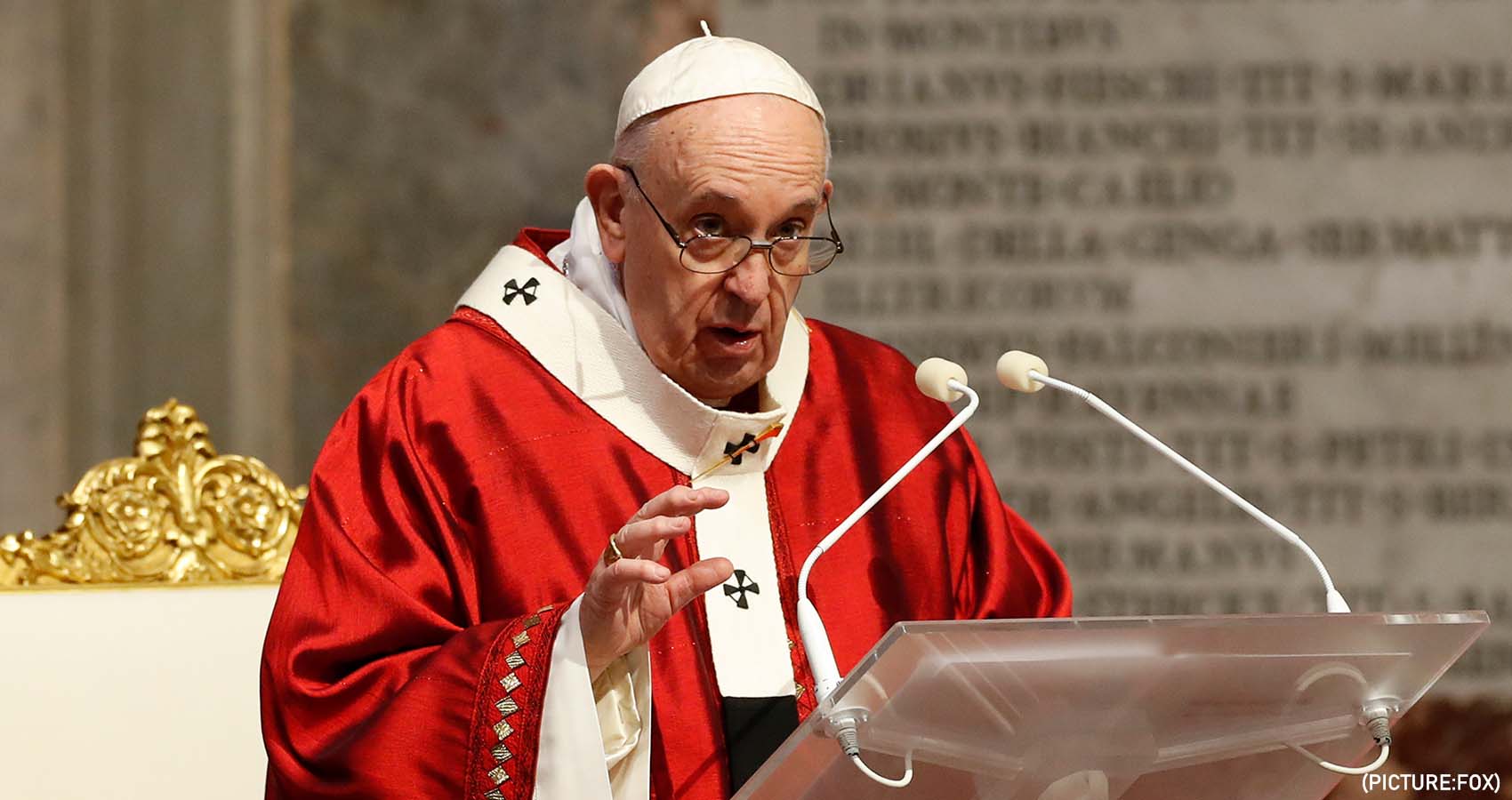
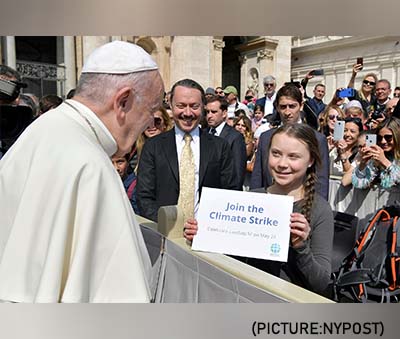 Francis expressed thanks “for all those times when you cultivate the dream of fraternity, work to heal the wounds of God’s creation, fight to ensure respect for the dignity of the vulnerable and spread the spirit of solidarity and sharing.”
Francis expressed thanks “for all those times when you cultivate the dream of fraternity, work to heal the wounds of God’s creation, fight to ensure respect for the dignity of the vulnerable and spread the spirit of solidarity and sharing.”
 Vihaan, 17, and his 14-year-old brother, Nav, were handed the International Children’s Peace Prize by Indian Nobel Peace Prize laureate Kailash Satyarthi at a ceremony in The Hague, Netherlands.
Vihaan, 17, and his 14-year-old brother, Nav, were handed the International Children’s Peace Prize by Indian Nobel Peace Prize laureate Kailash Satyarthi at a ceremony in The Hague, Netherlands. 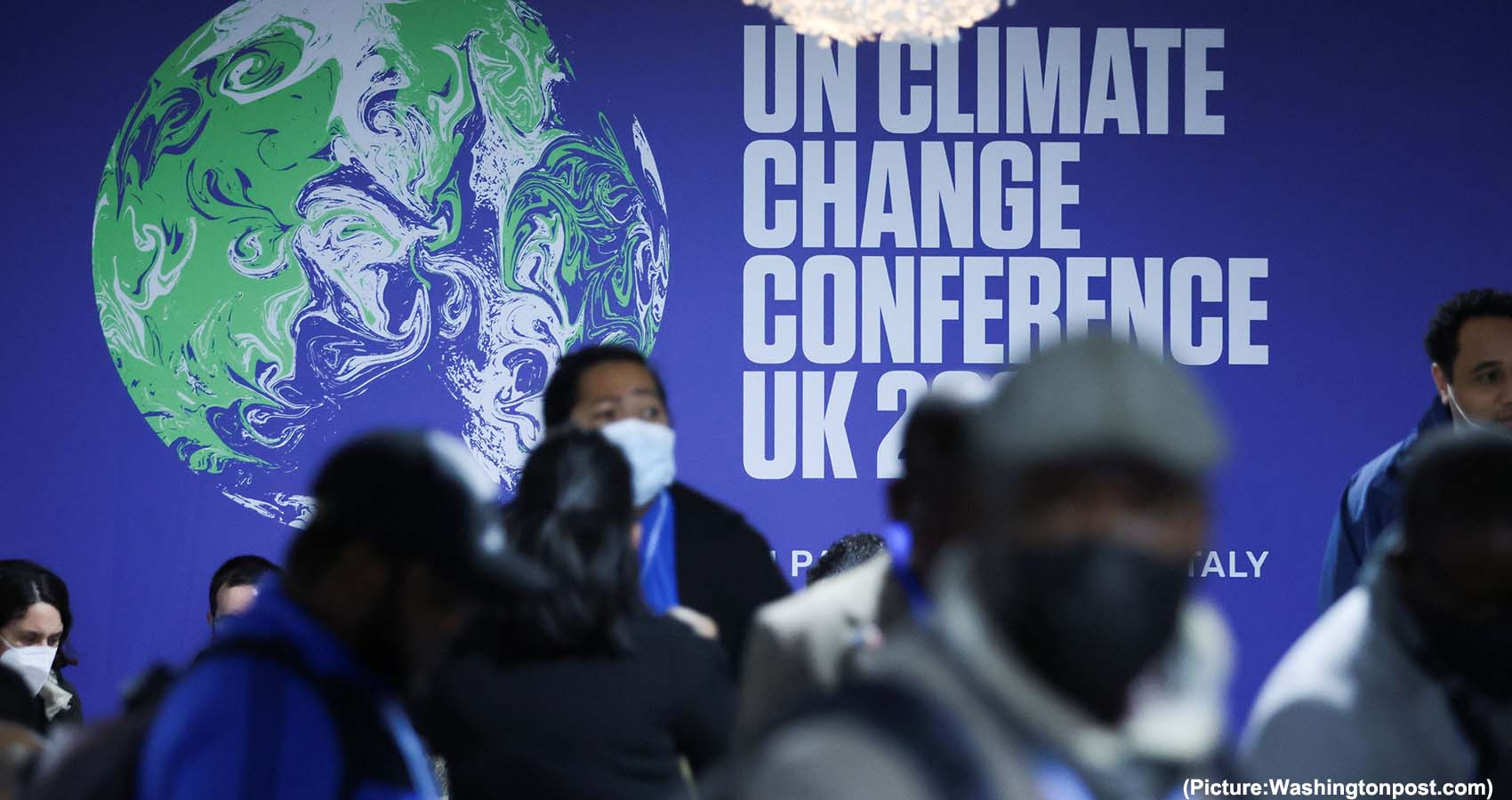
 This amendment reportedly came as a result of consultations among India, China, the UK and the US. The phrase “phase down” figures in the US-China Joint Declaration on Climate Change, announced on November 10. As the largest producer and consumer of coal and coal-based thermal power, it is understandable that China would prefer a gradual reduction rather than total elimination. India may have had similar concerns. However, it was inept diplomacy for India to move the amendment and carry the can rather than let the Chinese bell the cat. The stigma will stick and was unnecessary.
This amendment reportedly came as a result of consultations among India, China, the UK and the US. The phrase “phase down” figures in the US-China Joint Declaration on Climate Change, announced on November 10. As the largest producer and consumer of coal and coal-based thermal power, it is understandable that China would prefer a gradual reduction rather than total elimination. India may have had similar concerns. However, it was inept diplomacy for India to move the amendment and carry the can rather than let the Chinese bell the cat. The stigma will stick and was unnecessary.
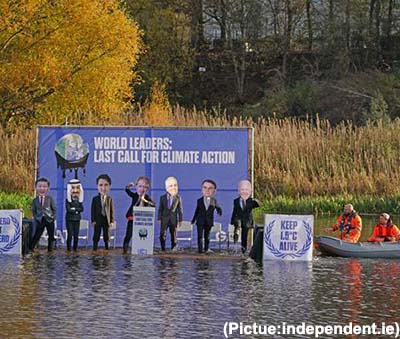 In a significant move, countries would urge one another to “accelerate the phasing out of coal and subsidies for fossil fuels” in the draft, though it has no explicit reference to ending the use of oil and gas. There has been a big push among developed nations to shut down coal-fired power plants, which are a major source of heat-trapping gases, but the fuel remains a critical and cheap source of electricity for countries like China and
In a significant move, countries would urge one another to “accelerate the phasing out of coal and subsidies for fossil fuels” in the draft, though it has no explicit reference to ending the use of oil and gas. There has been a big push among developed nations to shut down coal-fired power plants, which are a major source of heat-trapping gases, but the fuel remains a critical and cheap source of electricity for countries like China and 
 In India, a small part of Arunachal Pradesh and Assam will experience the partial eclipse, and those from Uttar Pradesh, Bihar, Jharkhand can see the end part of the penumbral eclipse. A penumbral lunar eclipse takes place when the Moon, Sun, and Earth are imperfectly aligned and the Moon moves through the outer part of Earth’s shadow called the penumbra.
In India, a small part of Arunachal Pradesh and Assam will experience the partial eclipse, and those from Uttar Pradesh, Bihar, Jharkhand can see the end part of the penumbral eclipse. A penumbral lunar eclipse takes place when the Moon, Sun, and Earth are imperfectly aligned and the Moon moves through the outer part of Earth’s shadow called the penumbra.
 The 44th U.S. president commended the private sector’s push to set net-zero emissions targets and also touted emissions reductions targets set in the U.K. and the European Union, while pointing out the absence of Chinese and Russian leaders from the summit.
The 44th U.S. president commended the private sector’s push to set net-zero emissions targets and also touted emissions reductions targets set in the U.K. and the European Union, while pointing out the absence of Chinese and Russian leaders from the summit.
 Despite the fact that the
Despite the fact that the According to analysts, Methane emission reductions from oil and gas production are the low-hanging fruit of the climate crisis: easy to fix with existing technology, and easy to track. Methane is the principal component of the natural gas used for cooking, heating and energy generation.
According to analysts, Methane emission reductions from oil and gas production are the low-hanging fruit of the climate crisis: easy to fix with existing technology, and easy to track. Methane is the principal component of the natural gas used for cooking, heating and energy generation.
 The
The 
 As Biden struggles to pass significant climate legislation at home ahead of next week’s U.N. climate summit, the new AP-NORC/EPIC poll also shows that 55% of Americans want Congress to pass a bill to ensure that more of the nation’s electricity comes from clean energy and less from climate-damaging coal and natural gas.
As Biden struggles to pass significant climate legislation at home ahead of next week’s U.N. climate summit, the new AP-NORC/EPIC poll also shows that 55% of Americans want Congress to pass a bill to ensure that more of the nation’s electricity comes from clean energy and less from climate-damaging coal and natural gas.
 To improve climate simulations, scientists are looking to the potential of artificial intelligence (AI). AI has offered profound insights in fields from materials science to manufacturing, and climate researchers are excited to explore how AI can be used to revolutionize how the Earth system, and especially its water cycle, can be simulated in order to dramatically improve our understanding and representation of the real world. In particular, AI offers the potential to dramatically increase the accuracy of predictions down to the scales of interest to scientists, and even stakeholders focused on designing, financing and deploying equitable climate solutions to America’s most disadvantaged communities.
To improve climate simulations, scientists are looking to the potential of artificial intelligence (AI). AI has offered profound insights in fields from materials science to manufacturing, and climate researchers are excited to explore how AI can be used to revolutionize how the Earth system, and especially its water cycle, can be simulated in order to dramatically improve our understanding and representation of the real world. In particular, AI offers the potential to dramatically increase the accuracy of predictions down to the scales of interest to scientists, and even stakeholders focused on designing, financing and deploying equitable climate solutions to America’s most disadvantaged communities.
 In the northern part of the state, drenching rains caused widespread flooding and rock slides over the weekend. Strong winds knocked down trees and even toppled two big rigs on the Richmond-San Rafael Bridge near San Francisco. Pacific Gas & Electric reported that 380,000 homes and businesses lost power, though most had it back Monday.
In the northern part of the state, drenching rains caused widespread flooding and rock slides over the weekend. Strong winds knocked down trees and even toppled two big rigs on the Richmond-San Rafael Bridge near San Francisco. Pacific Gas & Electric reported that 380,000 homes and businesses lost power, though most had it back Monday.
 With temperatures rising and extreme weather occurring across the globe, all eyes at the 2021 United Nations Climate Change Conference will be on China, the leading producer of greenhouse gases, and the United States, the largest emitter both historically and on a per capita basis.
With temperatures rising and extreme weather occurring across the globe, all eyes at the 2021 United Nations Climate Change Conference will be on China, the leading producer of greenhouse gases, and the United States, the largest emitter both historically and on a per capita basis.
 As per the long history cut short; Mullaperiyar dam was built in the late 1800s in the princely state of Travancore (present-day Kerala) and given to British-ruled Madras Presidency on a 999-year lease in 1886. The agreement granted full rights to the secretary of state of Tamil Nadu, a British official, to construct irrigation projects on the land. The dam was built to divert a part of the west-flowing Periyar river eastwards to feed the arid areas of Tamil Nadu. Now there is no princely state or British rule, so better forget about the 999 year lease. Only thing we need to care is the safety and fraternity among neighboring states and mutual help by each other.
As per the long history cut short; Mullaperiyar dam was built in the late 1800s in the princely state of Travancore (present-day Kerala) and given to British-ruled Madras Presidency on a 999-year lease in 1886. The agreement granted full rights to the secretary of state of Tamil Nadu, a British official, to construct irrigation projects on the land. The dam was built to divert a part of the west-flowing Periyar river eastwards to feed the arid areas of Tamil Nadu. Now there is no princely state or British rule, so better forget about the 999 year lease. Only thing we need to care is the safety and fraternity among neighboring states and mutual help by each other.
 The research updates a similar 2013 paper revealing that 97% of studies published between 1991 and 2012 supported the idea that human activities are altering Earth’s climate. The current survey examines the literature published from 2012 to November 2020 to explore whether the consensus has changed.
The research updates a similar 2013 paper revealing that 97% of studies published between 1991 and 2012 supported the idea that human activities are altering Earth’s climate. The current survey examines the literature published from 2012 to November 2020 to explore whether the consensus has changed.
 The study, “
The study, “
 “The graphite inside this ruby is really unique. It’s the first time we’ve seen evidence of ancient life in ruby-bearing rocks,” says Yakymchuk. “The presence of graphite also gives us more clues to determine how rubies formed at this location, something that is impossible to do directly based on a ruby’s colour and chemical composition.”
“The graphite inside this ruby is really unique. It’s the first time we’ve seen evidence of ancient life in ruby-bearing rocks,” says Yakymchuk. “The presence of graphite also gives us more clues to determine how rubies formed at this location, something that is impossible to do directly based on a ruby’s colour and chemical composition.”
 Torrential rain has battered the coastal state of Kerala last week, causing rivers to swell and flooding roads that left vehicles submerged in muddy waters, with some houses reduced to rubble.
Torrential rain has battered the coastal state of Kerala last week, causing rivers to swell and flooding roads that left vehicles submerged in muddy waters, with some houses reduced to rubble.
 “Reliance New Energy Solar Ltd (RNESL), a wholly owned subsidiary of RIL, has acquired REC Solar Holdings AS (REC Group) from China National Bluestar (Group) Co Ltd., for an enterprise value of $771 million,” RIL said in a statement. Speaking about the acquisition, RIL chairman and managing director
“Reliance New Energy Solar Ltd (RNESL), a wholly owned subsidiary of RIL, has acquired REC Solar Holdings AS (REC Group) from China National Bluestar (Group) Co Ltd., for an enterprise value of $771 million,” RIL said in a statement. Speaking about the acquisition, RIL chairman and managing director 
 As we know some countries have dealt with the spreading virus more effectively and efficiently than others because they relied on the correct professional advice and had the right people in the places instead of dilettantes with inflated egos. The immediacy of the pandemic with its daily effects on health care and peoples’ livelihoods is seen as urgent political and health issues unlike the dangers surrounding our planet which, to many, appear light miles away while still others treat it with large doses of skepticism.
As we know some countries have dealt with the spreading virus more effectively and efficiently than others because they relied on the correct professional advice and had the right people in the places instead of dilettantes with inflated egos. The immediacy of the pandemic with its daily effects on health care and peoples’ livelihoods is seen as urgent political and health issues unlike the dangers surrounding our planet which, to many, appear light miles away while still others treat it with large doses of skepticism.
 “When I first saw this little tree, while out on a forest trail leading from the field station, it was the fruit — looking like an orange-colored Chinese lantern and juicy when ripe with several seeds — that caught my attention,” says Robin Foster, the scientist who originally collected the mystery plant in Peru’s Manu National Park, a retired curator at Chicago’s Field Museum and now a researcher with the Smithsonian Tropical Research Institute. “I didn’t really think it was special, except for the fact that it had characteristics of plants in several different plant families, and didn’t fall neatly into any family. Usually I can tell the family by a quick glance, but damned if I could place this one.”
“When I first saw this little tree, while out on a forest trail leading from the field station, it was the fruit — looking like an orange-colored Chinese lantern and juicy when ripe with several seeds — that caught my attention,” says Robin Foster, the scientist who originally collected the mystery plant in Peru’s Manu National Park, a retired curator at Chicago’s Field Museum and now a researcher with the Smithsonian Tropical Research Institute. “I didn’t really think it was special, except for the fact that it had characteristics of plants in several different plant families, and didn’t fall neatly into any family. Usually I can tell the family by a quick glance, but damned if I could place this one.”

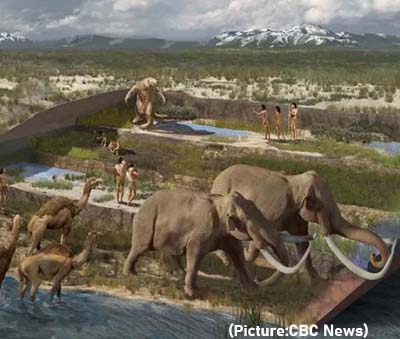 The prints were buried in layers of soil in the national park, with scientists from the US Geological Survey analyzing seeds embedded in the tracks to calculate the age of the fossils. Researchers also determined that the dozen footprints found belonged to a variety of people, mostly children and teenagers. Previously, scientists had widely assumed that the earliest appearance of humans in the Americas was 11,000 to 13,000 years ago because of stone spears found throughout North America and associated with what is known as the Clovis culture.
The prints were buried in layers of soil in the national park, with scientists from the US Geological Survey analyzing seeds embedded in the tracks to calculate the age of the fossils. Researchers also determined that the dozen footprints found belonged to a variety of people, mostly children and teenagers. Previously, scientists had widely assumed that the earliest appearance of humans in the Americas was 11,000 to 13,000 years ago because of stone spears found throughout North America and associated with what is known as the Clovis culture.
 So on Monday, Guterres and United Kingdom Prime Minister Boris Johnson are hosting a closed-door session with 35 to 40 world leaders to get countries to do more leading up to the huge climate negotiations in Scotland in six weeks. Those negotiations in the fall are designed to be the next step after the
So on Monday, Guterres and United Kingdom Prime Minister Boris Johnson are hosting a closed-door session with 35 to 40 world leaders to get countries to do more leading up to the huge climate negotiations in Scotland in six weeks. Those negotiations in the fall are designed to be the next step after the 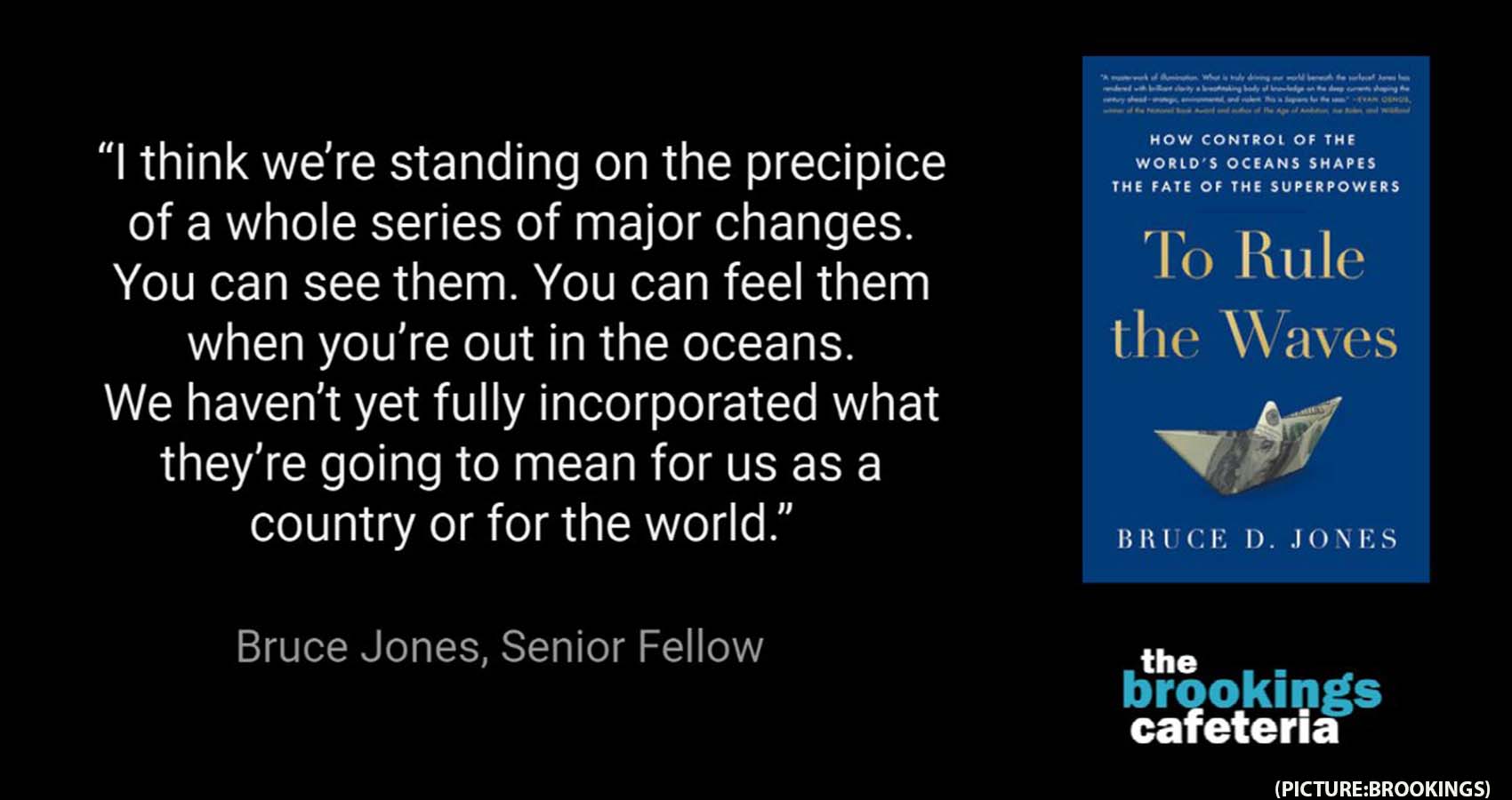

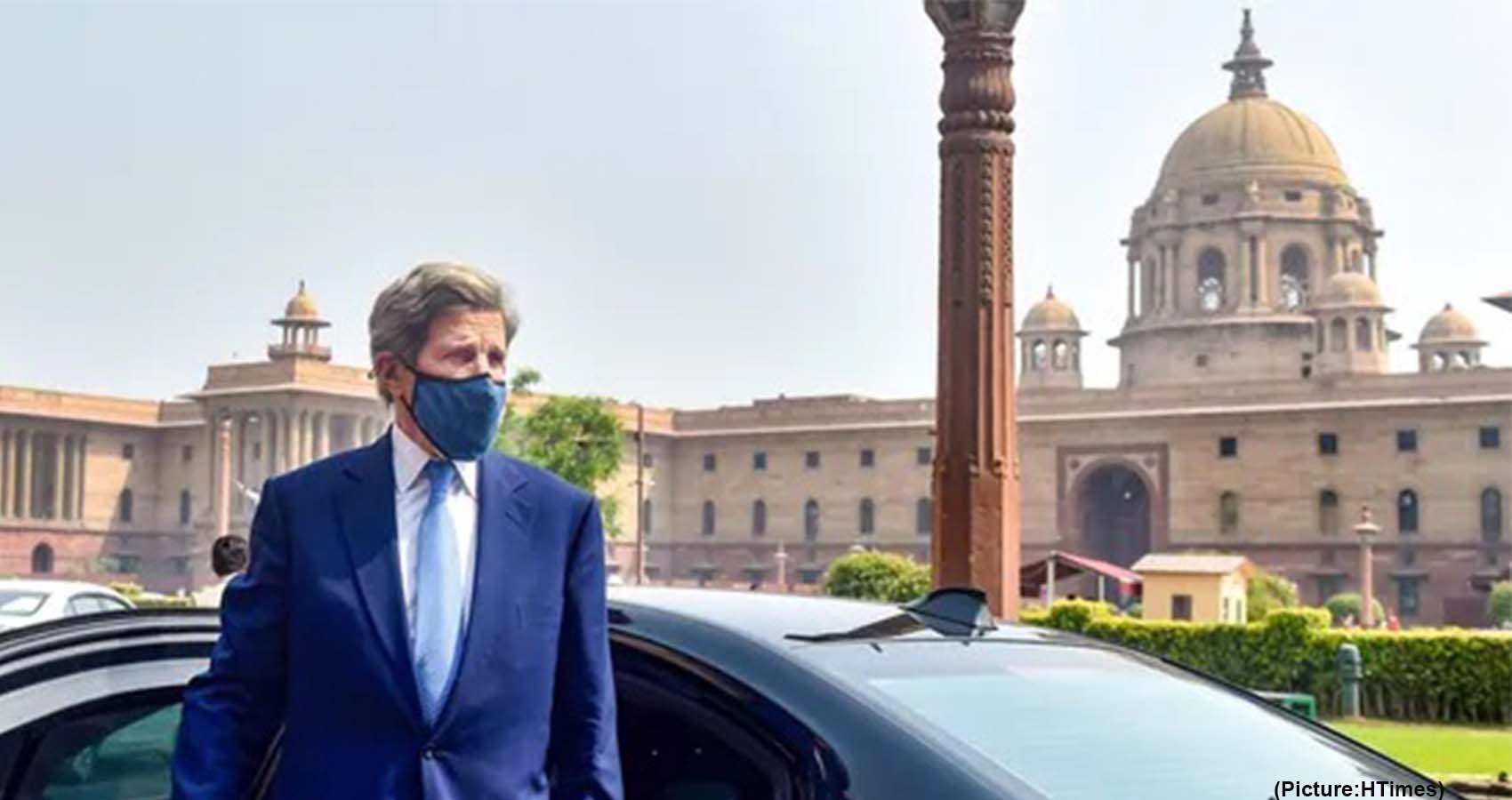
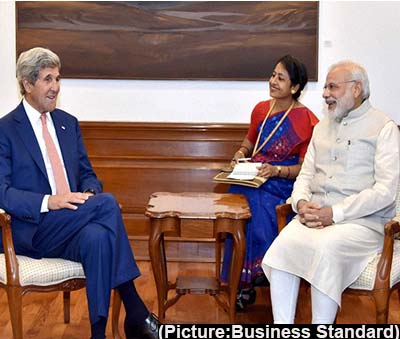 John Kerry along with Indian officials announced the Climate Action and Finance Mobilization dialogue, one of the two main tracks of the US-India Agenda 2030 Partnership that US President Joe Biden and Prime Minister Modi announced at the Leaders Summit on Climate in April this year. The CAFMD has three parts – the first being the climate action segment under which the US and India would develop proposals to curb emissions, Kerry said. The second was finance mobilization which would focus on attracting capital and technologies for India to scale up its renewable energy generation to its announced generation target of 450 GigaWatts. Over the past months, six of the largest banks in America had publicaly committed to investing a minimum of $ 4.16 trillion in the next 10 years to make the transition happen, the US envoy said. The third was climate adaptation and resilience that included efforts like extending India’s forest cover, he said.
John Kerry along with Indian officials announced the Climate Action and Finance Mobilization dialogue, one of the two main tracks of the US-India Agenda 2030 Partnership that US President Joe Biden and Prime Minister Modi announced at the Leaders Summit on Climate in April this year. The CAFMD has three parts – the first being the climate action segment under which the US and India would develop proposals to curb emissions, Kerry said. The second was finance mobilization which would focus on attracting capital and technologies for India to scale up its renewable energy generation to its announced generation target of 450 GigaWatts. Over the past months, six of the largest banks in America had publicaly committed to investing a minimum of $ 4.16 trillion in the next 10 years to make the transition happen, the US envoy said. The third was climate adaptation and resilience that included efforts like extending India’s forest cover, he said.
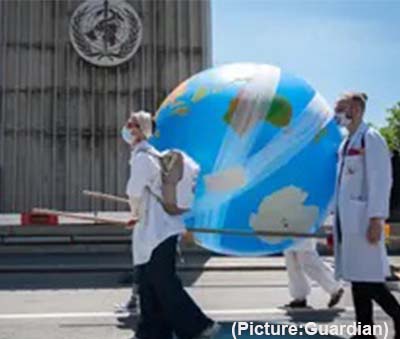 Their statement says: “Today, we are paying the price [of the climate emergency] … Tomorrow could be worse.” It concludes: “This is a critical moment. Our children’s future and the future of our common home depend on it.” The faith leaders have asked people to pray for world leaders ahead of Cop26, the global environment summit in Glasgow this autumn, and for individuals to make “meaningful sacrifices for the sake of the planet, working together and taking responsibility for how we use our resources”.
Their statement says: “Today, we are paying the price [of the climate emergency] … Tomorrow could be worse.” It concludes: “This is a critical moment. Our children’s future and the future of our common home depend on it.” The faith leaders have asked people to pray for world leaders ahead of Cop26, the global environment summit in Glasgow this autumn, and for individuals to make “meaningful sacrifices for the sake of the planet, working together and taking responsibility for how we use our resources”.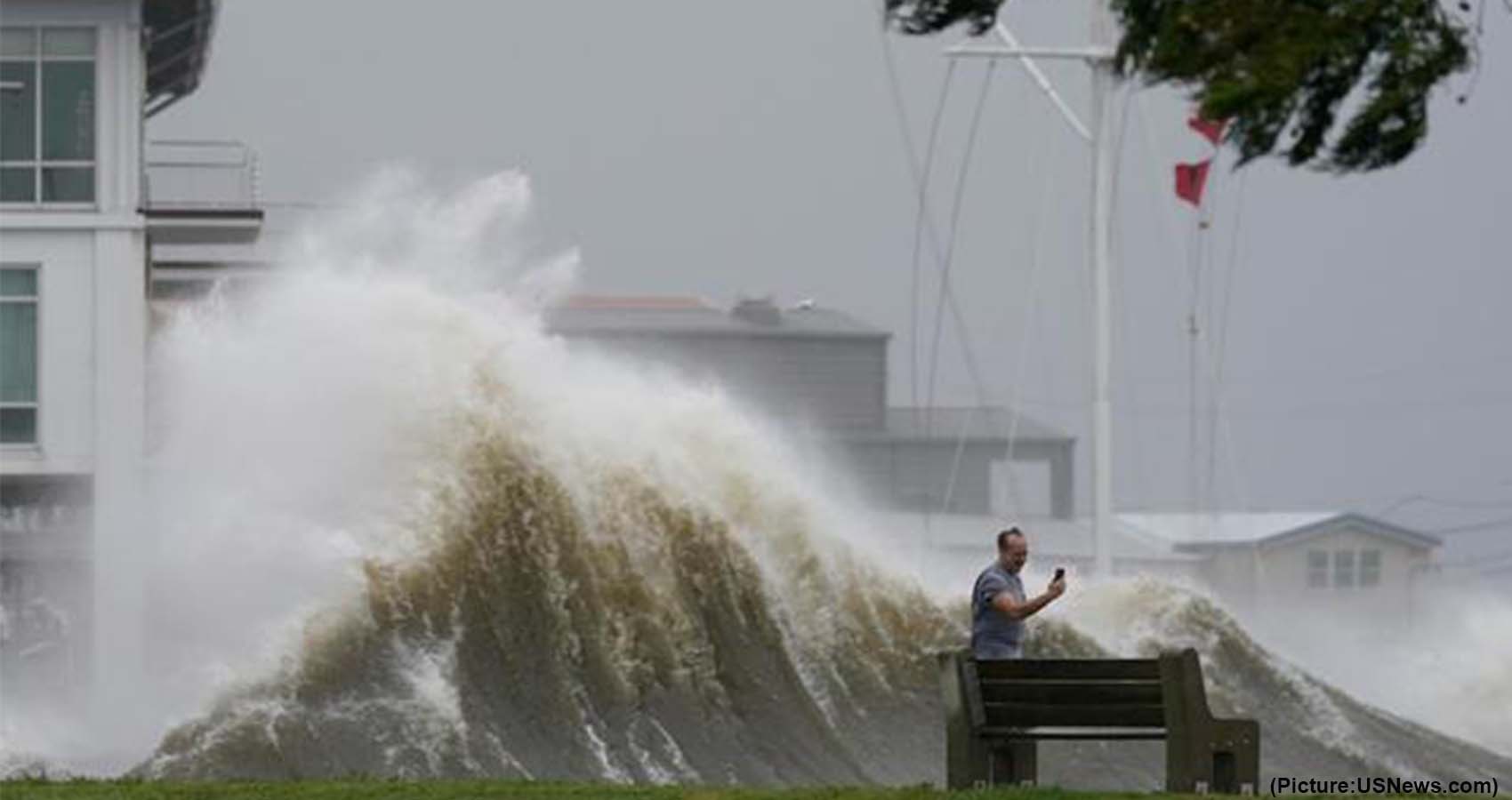
 Hurricane Ida roared ashore in Louisiana on Sunday at Category 4 strength, with maximum sustained winds of 150 mph. In fact, as the eyewall of Ida hammered the Louisiana coast, a ship about 50 miles south-southwest of New Orleans clocked a peak wind gust of 172 mph, which is just shy of the strongest measured wind from a hurricane in the US. Ida was downgraded to a tropical storm moved farther inland over southeastern Louisiana and into southwestern Mississippi, the National Hurricane Center said.
Hurricane Ida roared ashore in Louisiana on Sunday at Category 4 strength, with maximum sustained winds of 150 mph. In fact, as the eyewall of Ida hammered the Louisiana coast, a ship about 50 miles south-southwest of New Orleans clocked a peak wind gust of 172 mph, which is just shy of the strongest measured wind from a hurricane in the US. Ida was downgraded to a tropical storm moved farther inland over southeastern Louisiana and into southwestern Mississippi, the National Hurricane Center said.

 A new study has now pointed out that these changes in the Arctic region induced by anthropogenic global warming have disrupted a wind system called Stratospheric Polar Vortex (SPV). This stretching of SPV can lead to extreme cold events in parts of Asia and North America. The report published Friday in Science adds that this SPV disruption was behind the February 2021 Texas cold wave. “The SPV consists of strong westerly winds from 10km to 50km above the surface. It peaks at around 50 m/s on average near 50km and is strongest in mid-winter, however, on occasion it can weaken, and sometimes the winds reverse direction entirely,” explains one of the authors Prof. Chaim Garfinkel in an email to indianexpress.com. He is the Head of the Graduate Program in Atmospheric Science at Hebrew University, Israel. He adds that these stretching events almost certainly occurred before greenhouse gas emissions began increasing, but the current emissions are leading to an increase in the occurrence of these types of events.
A new study has now pointed out that these changes in the Arctic region induced by anthropogenic global warming have disrupted a wind system called Stratospheric Polar Vortex (SPV). This stretching of SPV can lead to extreme cold events in parts of Asia and North America. The report published Friday in Science adds that this SPV disruption was behind the February 2021 Texas cold wave. “The SPV consists of strong westerly winds from 10km to 50km above the surface. It peaks at around 50 m/s on average near 50km and is strongest in mid-winter, however, on occasion it can weaken, and sometimes the winds reverse direction entirely,” explains one of the authors Prof. Chaim Garfinkel in an email to indianexpress.com. He is the Head of the Graduate Program in Atmospheric Science at Hebrew University, Israel. He adds that these stretching events almost certainly occurred before greenhouse gas emissions began increasing, but the current emissions are leading to an increase in the occurrence of these types of events.
 “United continues on its trajectory to build a more innovative, sustainable airline and today’s advancements in technology are making it more viable to include supersonic planes,” said United CEO Scott Kirby. “Boom’s vision for the future of commercial aviation, combined with the industry’s most robust route network in the world, will give business and leisure travelers access to a stellar flight experience.” The announcement is not the first of an intended partnership between a supersonic firm and a large aviation company.
“United continues on its trajectory to build a more innovative, sustainable airline and today’s advancements in technology are making it more viable to include supersonic planes,” said United CEO Scott Kirby. “Boom’s vision for the future of commercial aviation, combined with the industry’s most robust route network in the world, will give business and leisure travelers access to a stellar flight experience.” The announcement is not the first of an intended partnership between a supersonic firm and a large aviation company.
 Chaired by Prime Minister Narendra Modi, the Cabinet gave its approval for signing the MoU between the GSI, under the Ministry of Mines, and the varsity’s board of trustees on behalf of its Department of Earth and Environment, a government statement said. The identified area of cooperation between the two participants would include development of geological knowledge, research regarding geologic and tectonic environment of post collisions magmatism in India-Asia collisional margin, geologic history and tectonics of the Eastern Himalayan Syntaxis and developing cooperative projects in the fields of regional geological, geochemical, petrological and multi-isotopic studies related to the evolution of post collisional magmatic belts.
Chaired by Prime Minister Narendra Modi, the Cabinet gave its approval for signing the MoU between the GSI, under the Ministry of Mines, and the varsity’s board of trustees on behalf of its Department of Earth and Environment, a government statement said. The identified area of cooperation between the two participants would include development of geological knowledge, research regarding geologic and tectonic environment of post collisions magmatism in India-Asia collisional margin, geologic history and tectonics of the Eastern Himalayan Syntaxis and developing cooperative projects in the fields of regional geological, geochemical, petrological and multi-isotopic studies related to the evolution of post collisional magmatic belts.
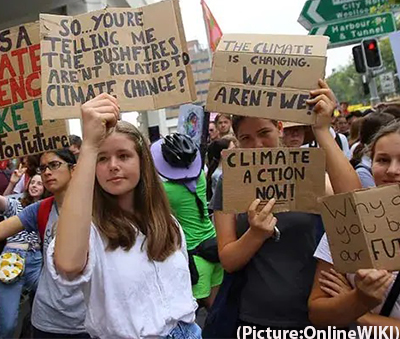 In the first index of its kind, published on Friday, UN children’s agency
In the first index of its kind, published on Friday, UN children’s agency 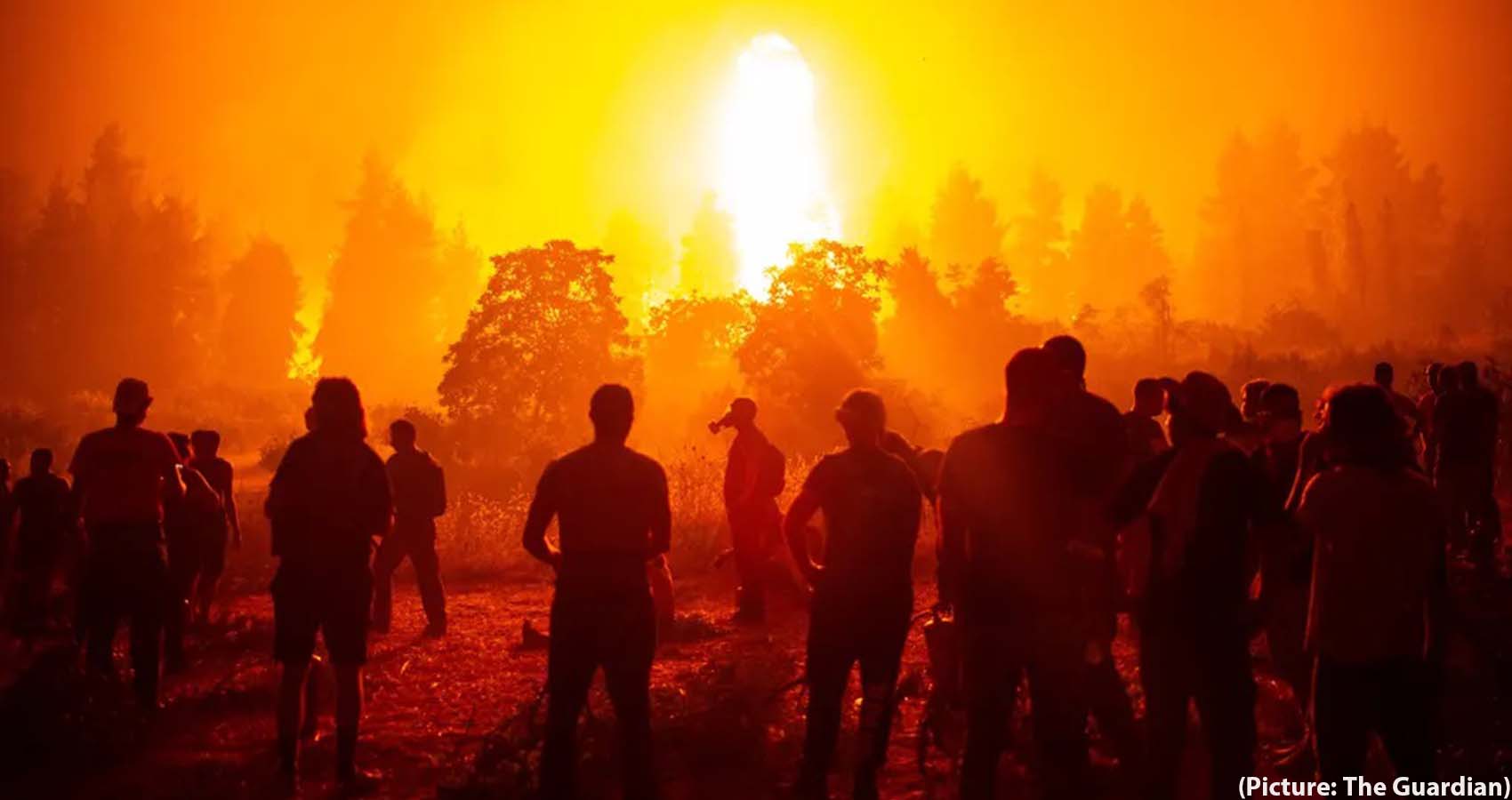
 “If there was still a need for a proof that climate changes is caused by human activities, then this is the report that provides it,” said Prof Corinne Le Quéré of the University of East Anglia. And the consequences of humanity’s massive act of atmospheric interference are now clear: what is hot today will become hotter tomorrow; extreme floods will become more frequent, wildfires more dangerous and deadly droughts more widespread. In short,
“If there was still a need for a proof that climate changes is caused by human activities, then this is the report that provides it,” said Prof Corinne Le Quéré of the University of East Anglia. And the consequences of humanity’s massive act of atmospheric interference are now clear: what is hot today will become hotter tomorrow; extreme floods will become more frequent, wildfires more dangerous and deadly droughts more widespread. In short, 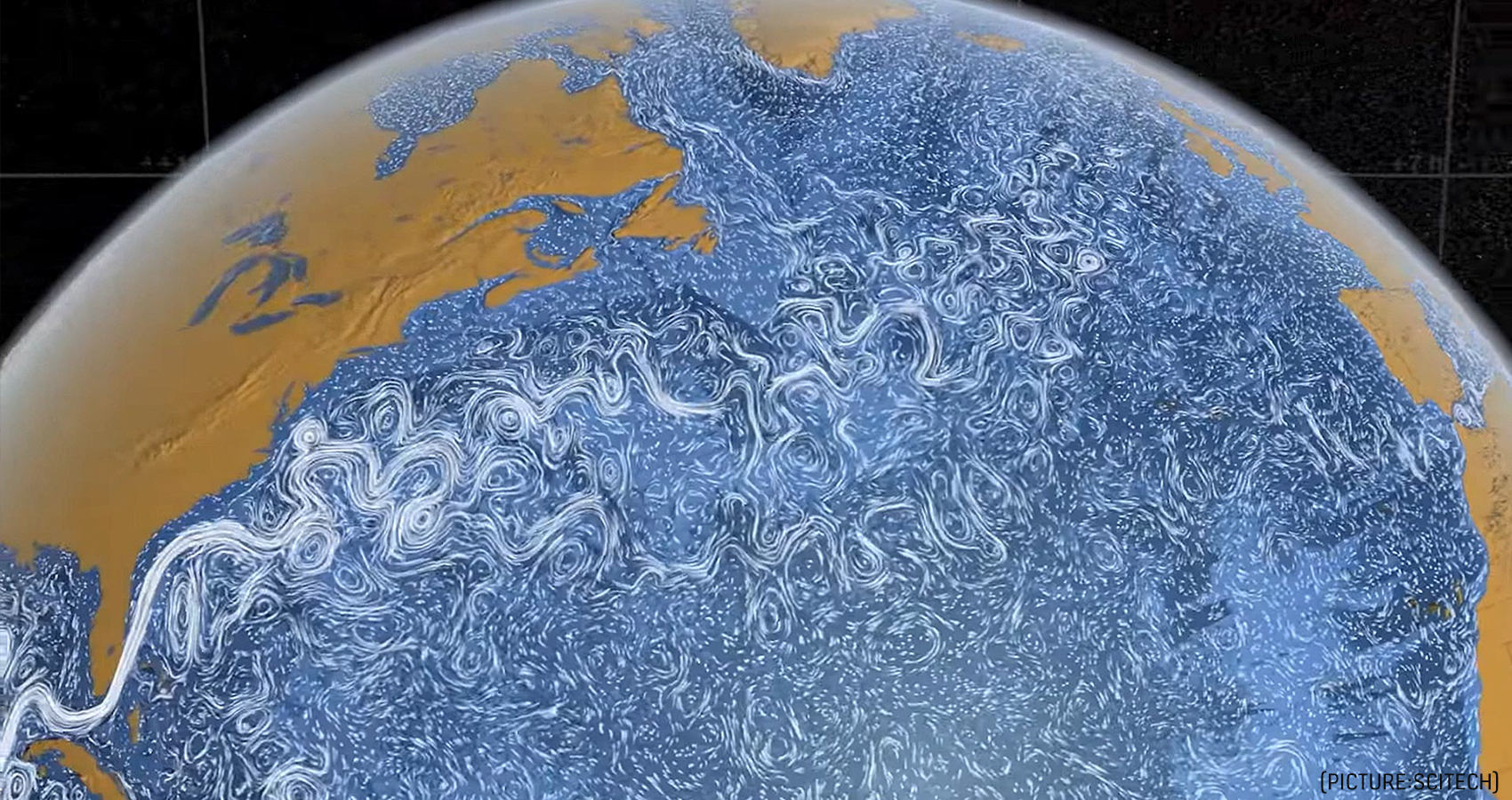
 The Atlantic Meridional Overturning Circulation (AMOC) — which the Gulf Stream is a major part of — helps maintain the energy balance in the Atlantic Ocean. It is often described as a “conveyor belt” that takes warm surface water from the tropics and distributes it to the north Atlantic. The colder, saltier water then sinks and flows south.
The Atlantic Meridional Overturning Circulation (AMOC) — which the Gulf Stream is a major part of — helps maintain the energy balance in the Atlantic Ocean. It is often described as a “conveyor belt” that takes warm surface water from the tropics and distributes it to the north Atlantic. The colder, saltier water then sinks and flows south. This scenario was the premise for the 2004 climate science fiction film “The Day After Tomorrow,” in which a series of extreme weather disasters strike after climate change caused the AMOC to collapse.
This scenario was the premise for the 2004 climate science fiction film “The Day After Tomorrow,” in which a series of extreme weather disasters strike after climate change caused the AMOC to collapse.
 Biden signed the executive order at the White House alongside representatives from Ford, GM and Stellantis, and members of the United Auto Workers Union. The automakers are supporting Biden’s new target, announcing their “shared aspiration” that 40-50% of their cars sold by 2030 to be electric vehicles, according to a joint statement from the three automakers.
Biden signed the executive order at the White House alongside representatives from Ford, GM and Stellantis, and members of the United Auto Workers Union. The automakers are supporting Biden’s new target, announcing their “shared aspiration” that 40-50% of their cars sold by 2030 to be electric vehicles, according to a joint statement from the three automakers.
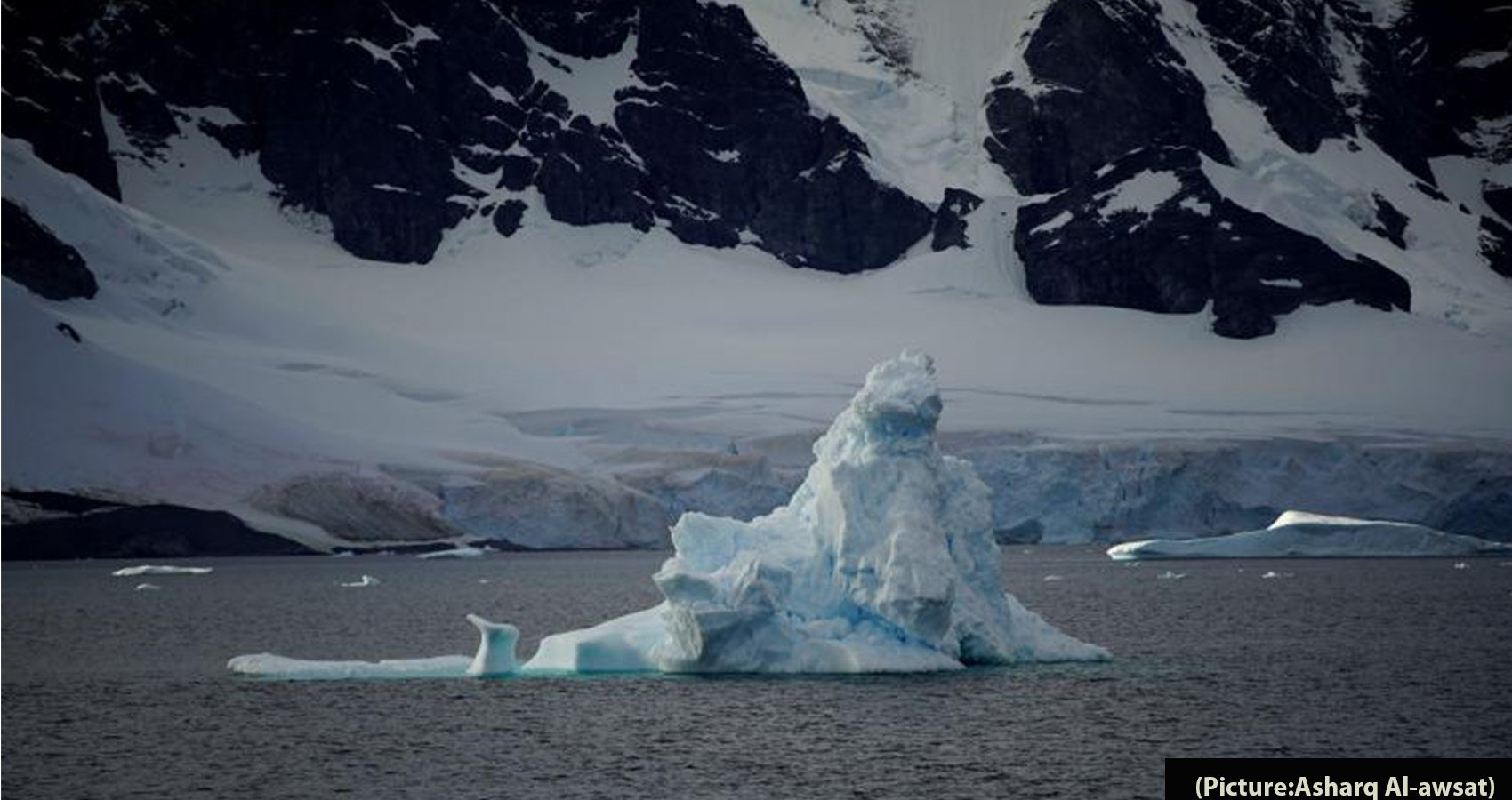
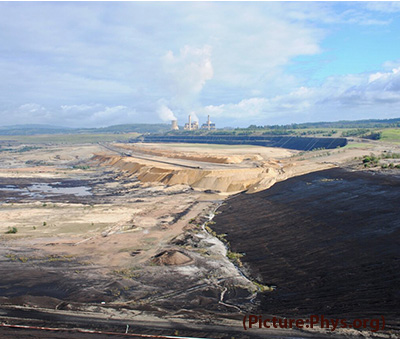 Between 40 and 34 million years ago, Earth’s climate underwent a major climatic transition. Before 40 million years ago, during the Eocene, Antarctica was covered by lush forests, but by 34 million years ago, in the Oligocene, these forests had been replaced by thick continental ice sheets, as we know Antarctica today. The main driver of this greenhouse to icehouse transition is widely debated, and little information is available about how climate changed on land. An international team led by Dr Vittoria Lauretano and
Between 40 and 34 million years ago, Earth’s climate underwent a major climatic transition. Before 40 million years ago, during the Eocene, Antarctica was covered by lush forests, but by 34 million years ago, in the Oligocene, these forests had been replaced by thick continental ice sheets, as we know Antarctica today. The main driver of this greenhouse to icehouse transition is widely debated, and little information is available about how climate changed on land. An international team led by Dr Vittoria Lauretano and 

 It’s not just our memories — this past June was the hottest June recorded in the U.S. in more than a century, about four degrees hotter on average. Heat waves (like in the
It’s not just our memories — this past June was the hottest June recorded in the U.S. in more than a century, about four degrees hotter on average. Heat waves (like in the 
 Bernardinelli and Bernstein used algorithms at the National Center for Supercomputing Applications at the University of Illinois at Urbana-Champaign to identify trans-Neptunian objects. During their work, the astronomers traced 32 detections to one object. Comets are icy relics that were kicked out of the solar system when the giant planets formed and migrated to their current configurations. As comets approach our sun during their orbits, their ices evaporate, creating their signature appearance.
Bernardinelli and Bernstein used algorithms at the National Center for Supercomputing Applications at the University of Illinois at Urbana-Champaign to identify trans-Neptunian objects. During their work, the astronomers traced 32 detections to one object. Comets are icy relics that were kicked out of the solar system when the giant planets formed and migrated to their current configurations. As comets approach our sun during their orbits, their ices evaporate, creating their signature appearance.

 Each yearly delineation on the sequoia’s surface is a small part of a far grander story that ties together all of life on Earth. Scientists know this as Deep Time. It’s not just on the scale of centuries, millennia, epochs, or periods, but the ongoing flow that goes back to the origins of our universe, the formation of the Earth, and the evolution of all life, up through this present moment. It’s the backdrop for everything we see around us today, and it can be understood through techniques as different as absolute dating of radioactive minerals and counting the rings of a prehistoric tree. Each part informs the whole.
Each yearly delineation on the sequoia’s surface is a small part of a far grander story that ties together all of life on Earth. Scientists know this as Deep Time. It’s not just on the scale of centuries, millennia, epochs, or periods, but the ongoing flow that goes back to the origins of our universe, the formation of the Earth, and the evolution of all life, up through this present moment. It’s the backdrop for everything we see around us today, and it can be understood through techniques as different as absolute dating of radioactive minerals and counting the rings of a prehistoric tree. Each part informs the whole.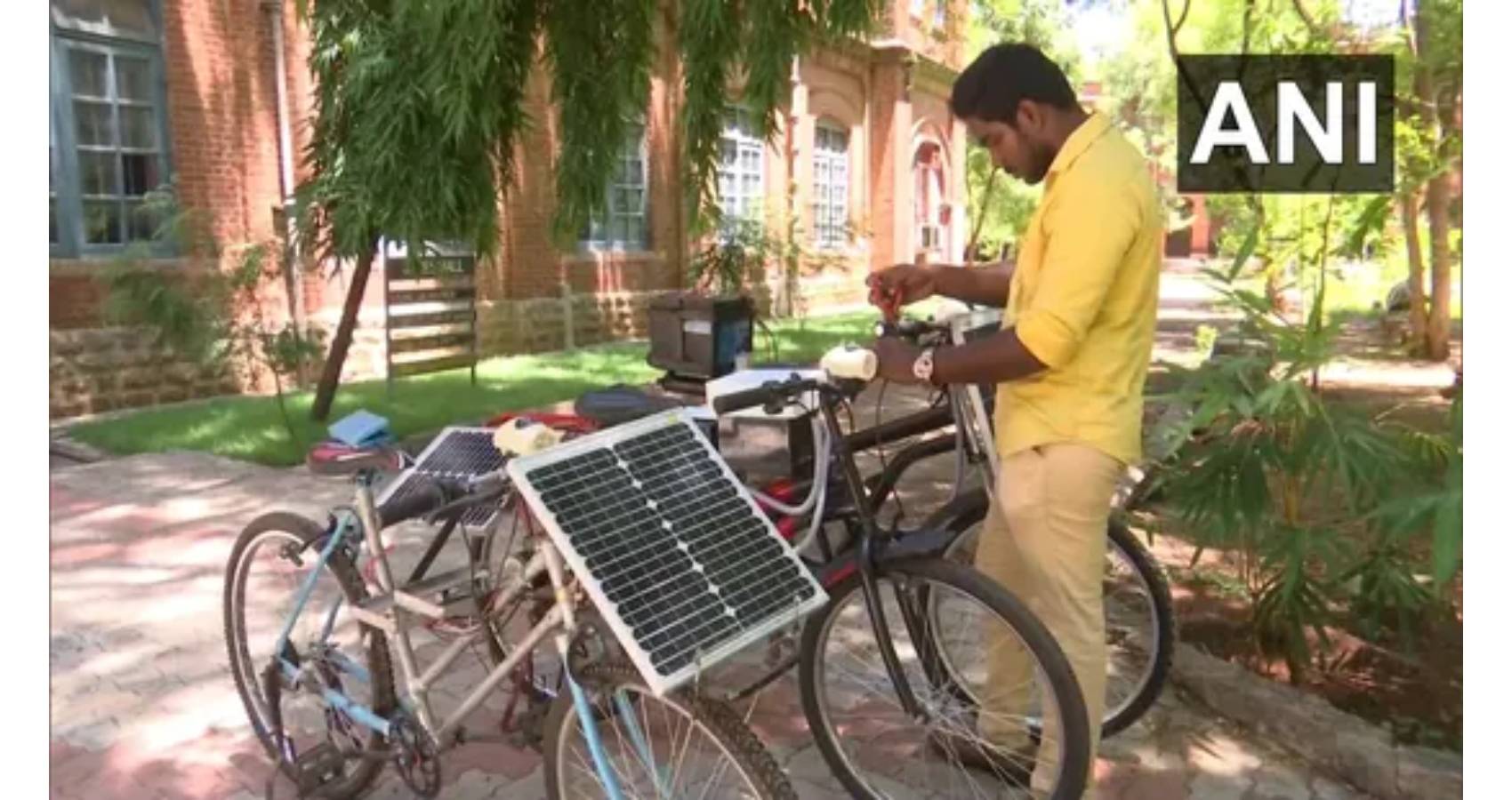
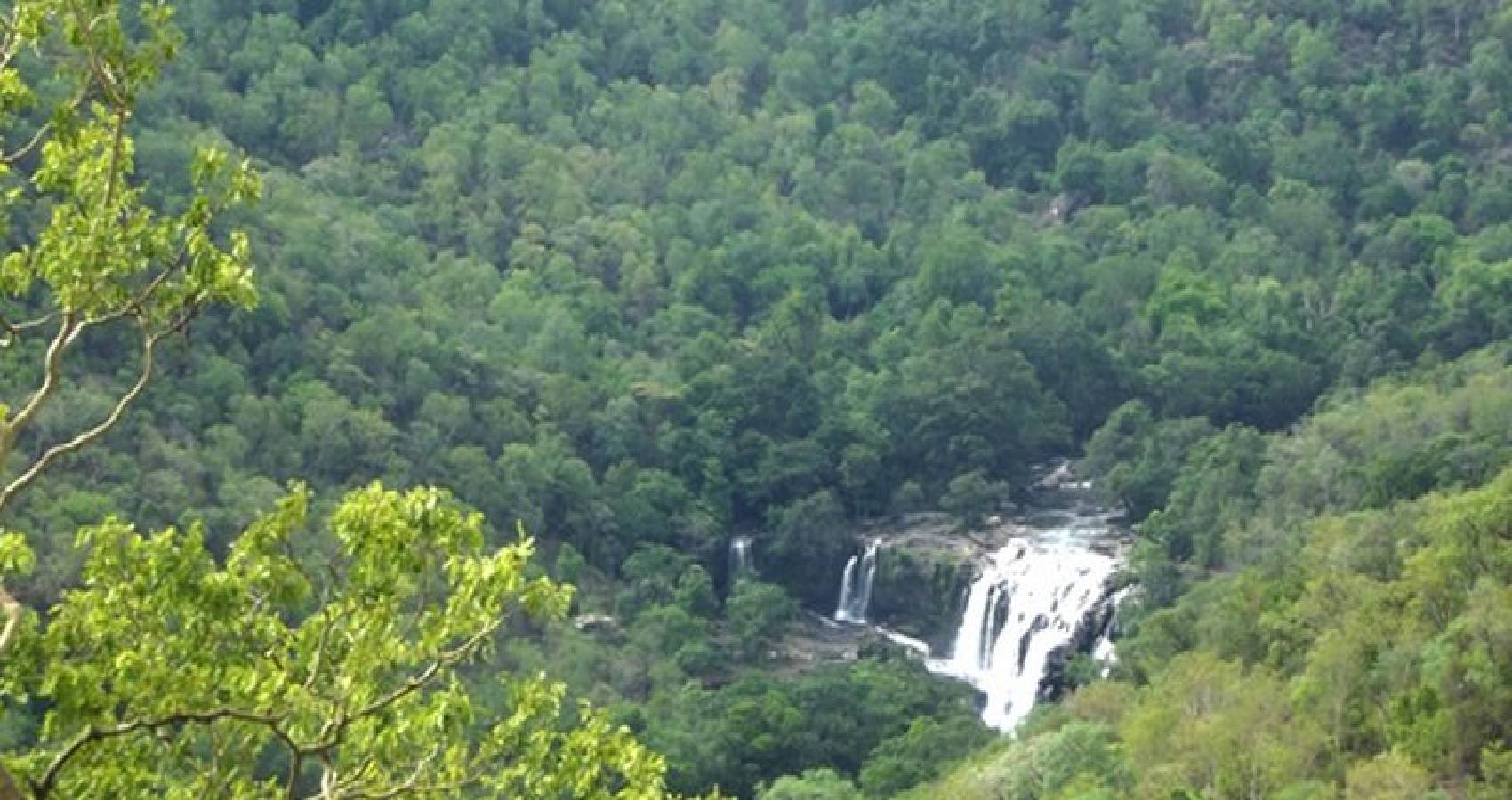
 The trekking to the waterfalls, which is around 8 km from Marayoor near Alampetty on Marayoor-Udumalpet state highway, is arranged by the forest department. The guided trek from Alampetty checkpost offers a perfect opportunity to witness rare wildlife amid the lush green forests of Chinnar. If you are lucky enough, you can spot elephants, langurs, giant grizzled squirrels (Chinnar is famous for them) and numerous types of butterflies and birds. This part of the sanctuary is a rain-shadow region with a climate that is different from that what is experienced in the other parts of the state.
The trekking to the waterfalls, which is around 8 km from Marayoor near Alampetty on Marayoor-Udumalpet state highway, is arranged by the forest department. The guided trek from Alampetty checkpost offers a perfect opportunity to witness rare wildlife amid the lush green forests of Chinnar. If you are lucky enough, you can spot elephants, langurs, giant grizzled squirrels (Chinnar is famous for them) and numerous types of butterflies and birds. This part of the sanctuary is a rain-shadow region with a climate that is different from that what is experienced in the other parts of the state.
 The co-axial electrospinning technique is one of the most favorable and simple options to fabricate membranes with three-dimensional hierarchical structures. Dr. Woo’s research team used poly(vinylidene fluoride-co-hexafluoropropylene) as the core and silica aerogel mixed with a low concentration of the polymer as the sheath to produce a co-axial composite membrane and obtain a superhydrophobic membrane surface. In fact, silica aerogel exhibited a much lower thermal conductivity compared with that of conventional polymers, which led to increased water vapor flux during the membrane distillation process due to a reduction of conductive heat losses.
The co-axial electrospinning technique is one of the most favorable and simple options to fabricate membranes with three-dimensional hierarchical structures. Dr. Woo’s research team used poly(vinylidene fluoride-co-hexafluoropropylene) as the core and silica aerogel mixed with a low concentration of the polymer as the sheath to produce a co-axial composite membrane and obtain a superhydrophobic membrane surface. In fact, silica aerogel exhibited a much lower thermal conductivity compared with that of conventional polymers, which led to increased water vapor flux during the membrane distillation process due to a reduction of conductive heat losses.


 “This has the potential to be game-changing both in terms of the way research is done and to highlight the synergies between these topics. Oftentimes, because we work in silos, we tend to forget that there is such a strong interconnection between these systems and clearly between climate and biodiversity,” co-author ShobhaMaharaj told IPS. Maharaj is a lead author on the small islands chapter of the
“This has the potential to be game-changing both in terms of the way research is done and to highlight the synergies between these topics. Oftentimes, because we work in silos, we tend to forget that there is such a strong interconnection between these systems and clearly between climate and biodiversity,” co-author ShobhaMaharaj told IPS. Maharaj is a lead author on the small islands chapter of the  “Land and ocean are already doing a lot, absorbing almost 50 percent of carbon dioxide from human emissions, but nature cannot do everything,” said Ana María Hernández Salgar, Chair of IPBES. The
“Land and ocean are already doing a lot, absorbing almost 50 percent of carbon dioxide from human emissions, but nature cannot do everything,” said Ana María Hernández Salgar, Chair of IPBES. The 

 Over the centuries, the June solstice has inspired countless festivals,
Over the centuries, the June solstice has inspired countless festivals, 
 Co-authored by research scientists and engineers from WHOI, MBARI (Monterey Bay Aquarium Research Institute), and Stanford University, the paper outlines the robot’s success in autonomously tracking two gelatinous marine creatures during a 2019 research cruise in Monterey Bay. High-definition video revealed a “dinner plate” jellyfish “ramming” a siphonophore, which narrowly escaped the jelly’s venomous tentacles. Mesobot also recorded a 30-minute video of a giant larvacean, which appears to be nearly motionless but is actually riding internal waves that rise and fall 6 meters (20 feet). These observations represent the first time that a self-guided robot has tracked these small, clear creatures as they move through the water column like a “parcel of water,” said Yoerger.
Co-authored by research scientists and engineers from WHOI, MBARI (Monterey Bay Aquarium Research Institute), and Stanford University, the paper outlines the robot’s success in autonomously tracking two gelatinous marine creatures during a 2019 research cruise in Monterey Bay. High-definition video revealed a “dinner plate” jellyfish “ramming” a siphonophore, which narrowly escaped the jelly’s venomous tentacles. Mesobot also recorded a 30-minute video of a giant larvacean, which appears to be nearly motionless but is actually riding internal waves that rise and fall 6 meters (20 feet). These observations represent the first time that a self-guided robot has tracked these small, clear creatures as they move through the water column like a “parcel of water,” said Yoerger.
 “Young people talk about these key demands that they have and most of the time, they are criticised for always saying ‘I want this,’ and are told ‘but you’re not even sure you know what you can do,’” Global South Focal Point for the Global Youth Biodiversity Network (GYBN) SwethaStotraBhashyam told IPS. “So we linked our demands to our own actions through our ‘Your Promise, Our Future’ campaign and are showing world leaders what we are doing for the world and then asking them what they are going to do for us and our future.”
“Young people talk about these key demands that they have and most of the time, they are criticised for always saying ‘I want this,’ and are told ‘but you’re not even sure you know what you can do,’” Global South Focal Point for the Global Youth Biodiversity Network (GYBN) SwethaStotraBhashyam told IPS. “So we linked our demands to our own actions through our ‘Your Promise, Our Future’ campaign and are showing world leaders what we are doing for the world and then asking them what they are going to do for us and our future.” She told IPS the Summit was a “very powerful and immersive experience”. “I am impressed at how knowledgeable the young people of different ages were. Many spoke about recycling projects and entrepreneurship activities from their own experiences. Others shared ideas on how to use different art forms for communicating climate emergencies. Somehow, the conversation I most vividly remember was on how to disclose environmental issues in theatrical performances. I’m taking that with me as food for thought,” Garlytska said.For Emmanuel Sindikubwabo of Rwanda’s reforestation and youth environmental education organisation We Do GREEN, the Summit provided excellent networking opportunities.
She told IPS the Summit was a “very powerful and immersive experience”. “I am impressed at how knowledgeable the young people of different ages were. Many spoke about recycling projects and entrepreneurship activities from their own experiences. Others shared ideas on how to use different art forms for communicating climate emergencies. Somehow, the conversation I most vividly remember was on how to disclose environmental issues in theatrical performances. I’m taking that with me as food for thought,” Garlytska said.For Emmanuel Sindikubwabo of Rwanda’s reforestation and youth environmental education organisation We Do GREEN, the Summit provided excellent networking opportunities.


 In 2020 – one of the three warmest years on record – the global average temperature was 1.2 degrees Celsius above the pre-industrial baseline, according to an April
In 2020 – one of the three warmest years on record – the global average temperature was 1.2 degrees Celsius above the pre-industrial baseline, according to an April 

 For years, governments have tended to “kick the can” on climate policy, putting off action while the concentration of GHGs in the atmosphere continues to climb. Climate is exactly the kind of problem that humans are terrible at dealing with — a tragedy of the commons that pits future generations against the present and developing countries against the wealthy world. Nevertheless, the costs of inaction are becoming clearer, and in recent years many countries have become more serious about cutting greenhouse gas emissions.
For years, governments have tended to “kick the can” on climate policy, putting off action while the concentration of GHGs in the atmosphere continues to climb. Climate is exactly the kind of problem that humans are terrible at dealing with — a tragedy of the commons that pits future generations against the present and developing countries against the wealthy world. Nevertheless, the costs of inaction are becoming clearer, and in recent years many countries have become more serious about cutting greenhouse gas emissions.


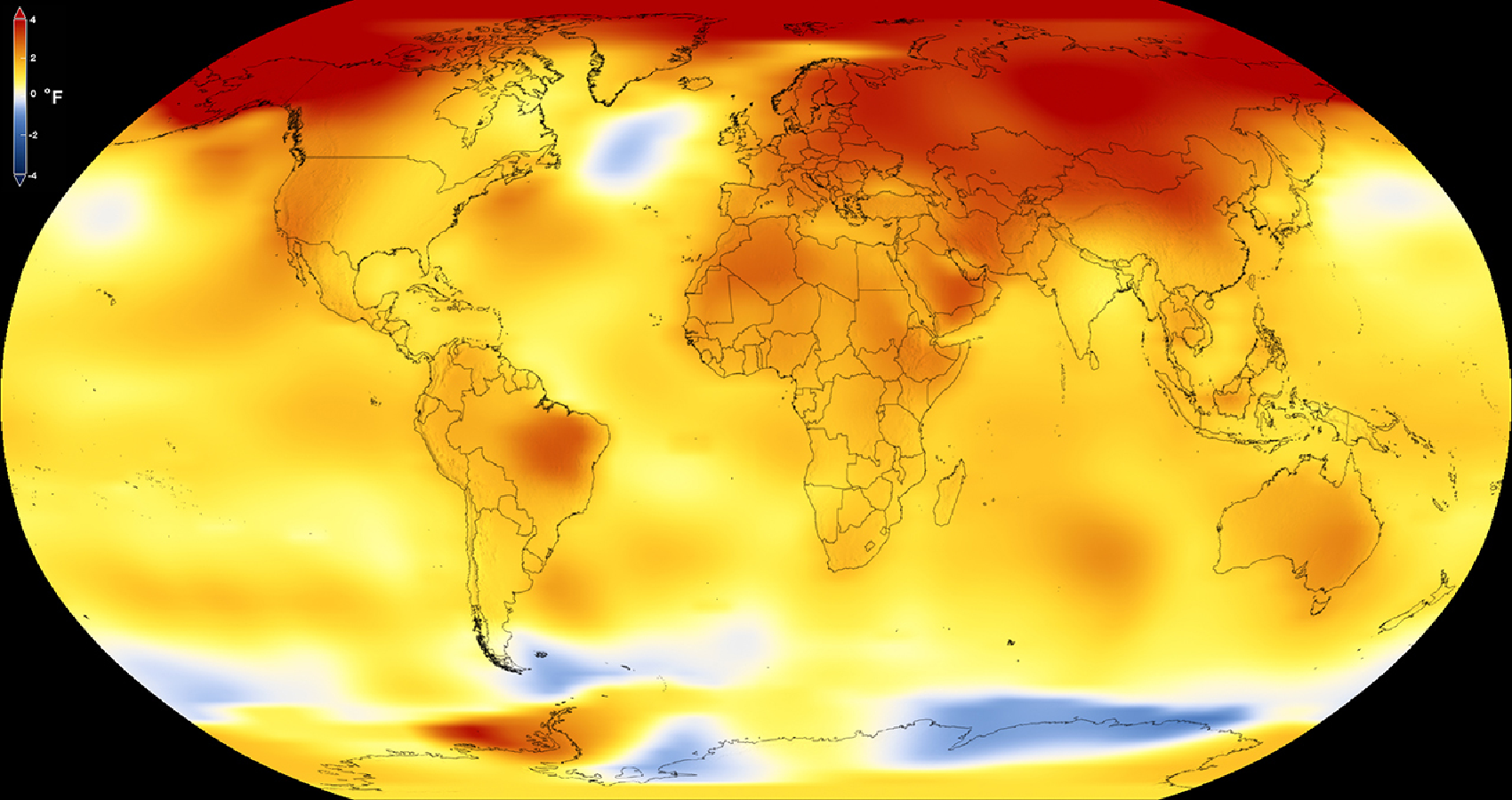
 “The changes in NOAA’s new report are only a degree or less but can still have a big impact, especially when much of the past century has seen steadily increasing temperatures, with the most pronounced changes occurring in the past several decades,” said Nick Bassill, a meteorologist at the University at Albany. “The unfortunate thing is that this does not make a bigger splash, even though it’s almost universally accepted that the new climate normals were going to come in warmer than the last report.”
“The changes in NOAA’s new report are only a degree or less but can still have a big impact, especially when much of the past century has seen steadily increasing temperatures, with the most pronounced changes occurring in the past several decades,” said Nick Bassill, a meteorologist at the University at Albany. “The unfortunate thing is that this does not make a bigger splash, even though it’s almost universally accepted that the new climate normals were going to come in warmer than the last report.”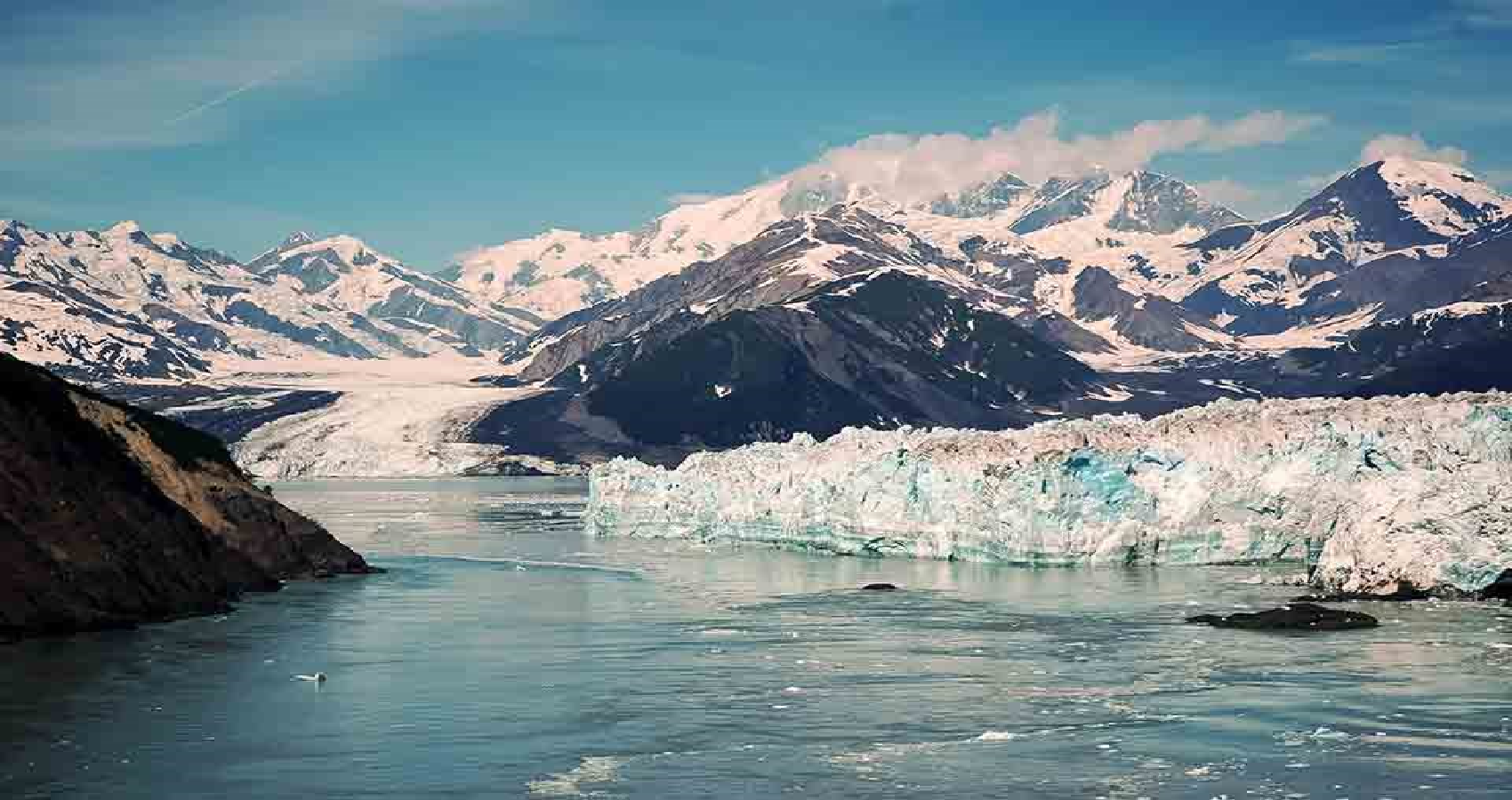


 The United Nations Secretary-General’s Envoy on Youth, Jayathma Wickramanayake, told IPS that the Summit achieved an important goal of bringing institutions and political conversations closer to young people. During her tenure, Wickramanayake has advocated for a common set of principles for youth engagement within the UN system, based on rights, safety and adequate financing. She said it is important for institutions to open their doors to meaningful engagement with young people.
The United Nations Secretary-General’s Envoy on Youth, Jayathma Wickramanayake, told IPS that the Summit achieved an important goal of bringing institutions and political conversations closer to young people. During her tenure, Wickramanayake has advocated for a common set of principles for youth engagement within the UN system, based on rights, safety and adequate financing. She said it is important for institutions to open their doors to meaningful engagement with young people.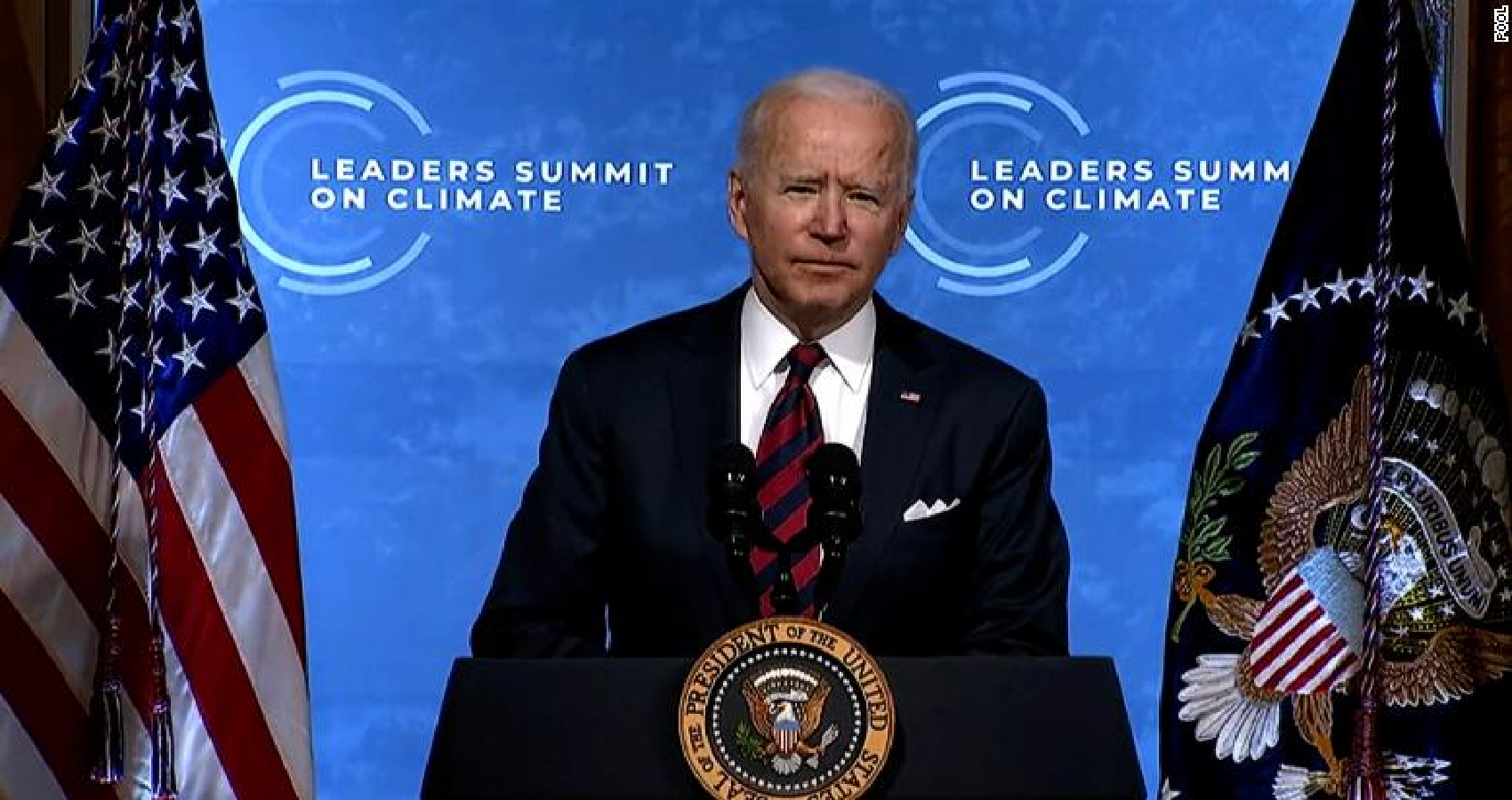
 As part of the 2015 Paris Agreement, wealthy nations agreed to set aside $100 billion a year in climate financing to help developing nations adapt to climate change and transition to renewable sources of power. But it is still underfunded—in 2018, the latest information available, countries had only committed a total of $78.9 billion—and does nothing to stop the dozens of fossil fuel projects already in progress on the continent.
As part of the 2015 Paris Agreement, wealthy nations agreed to set aside $100 billion a year in climate financing to help developing nations adapt to climate change and transition to renewable sources of power. But it is still underfunded—in 2018, the latest information available, countries had only committed a total of $78.9 billion—and does nothing to stop the dozens of fossil fuel projects already in progress on the continent.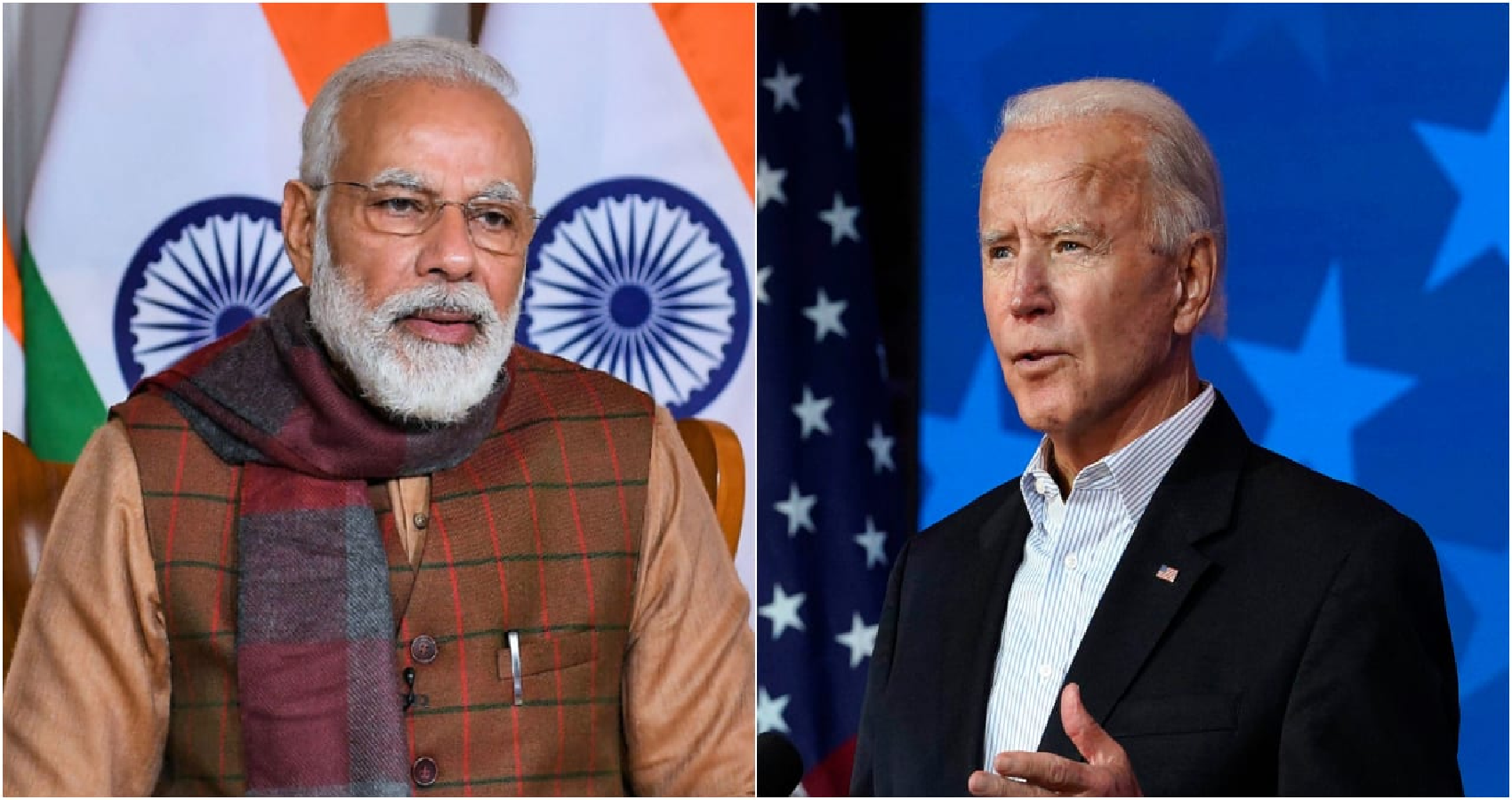
 To help meet this goal, he said that the US will double by 2024 “our annual public climate development finance to developing countries compared to what we were providing during the second half of Obama-Biden administration”.
To help meet this goal, he said that the US will double by 2024 “our annual public climate development finance to developing countries compared to what we were providing during the second half of Obama-Biden administration”.
 United States Special Presidential Envoy for Climate, John Kerry had met Prime Minister Narendra Modi and environment minister Prakash Javadekar earlier this month regarding increasing climate ambition ahead of COP 26 in Glasgow this November. Minister for Europe and Foreign Affairs of France, Jean-Yves Le Drian had also met Javadekar and said all countries should be on track to achieve carbon neutrality and start phasing out coal.
United States Special Presidential Envoy for Climate, John Kerry had met Prime Minister Narendra Modi and environment minister Prakash Javadekar earlier this month regarding increasing climate ambition ahead of COP 26 in Glasgow this November. Minister for Europe and Foreign Affairs of France, Jean-Yves Le Drian had also met Javadekar and said all countries should be on track to achieve carbon neutrality and start phasing out coal.
